Revisiting Field
Elisa SilvaRevisiting Field Conditions
Revisiting Field Conditions
Revisiting Field Conditions
Revisiting Field Conditions




Revisiting Field Conditions
In surveying landscapes, neighborhoods and communities, design could greatly benefit from further consideration of how they are recorded. Indeed, unreduced interpretations of fields, as the architect Stan Allen argued, remain conspicuously underexplored arsenals for design. His 1997 essay “From Object to Field” is a call to embrace “the real in all its messiness and unpredictability.” He gripes that architect´s need for control has impoverished the discipline by disengaging it from the complexity and indeterminacy of most every field.
This Open Project revisits the premise of field conditions encompassing not only territory, but also discipline and actors. What is this missing “real” in design? In order to facilitate ample opportunities to explore the ‘real’, students will go on frequent walks and become “regulars” of Mattapan in Boston. Engaging organizations and locals in conversation, observing daily routines, exploring overlooked spaces, tracing real estate dynamics, spotting conflicts and identifying misunderstood assumptions are desired outcomes of each visit. Students will also acknowledge bonds and even affection created with locals and understand themselves as part of the set of actors that operate in the field. Students are encouraged to pursue collaborative endeavors amongst themselves and with neighbors. In revisiting field conditions, students move into shared creative processes that while inclusive and complex, arrive at expressions that are resourceful, accessible, and relevant to people and the places they inhabit.
Studio Instructor Elisa Silva
Teaching Fellow Esesua Ikpefan
Students
Alexandra Barnes, Stacey Berman, Maggie House, Inkoo Kang, Runke Luo, Marcel Merwin, Niko Tian, Jessica Walker, Cherry Wu, Jenny Yi.
Final Review Critics Laura Bliss, Tania Bruguera, Shamichael Hallman, Garnette Cadogan, Alex Wall, Abbie Spinak, Johnathan Evans, Elizabeth Christophoretti.
Students
17 Class Walks in Mattapan
19 Fense Conditions
Cherry Wu and Jenny Yi
107 Carnet du Voyage
Jessica Walker, Jenny Yi, Stacey Berman, Jessica Walker, Elisa Silva, Jenny Y, Marcel Merwin, Cherry Wu
113 Chez-Vous Roller Skating Rink visit
115 Mattapan Menu
Inkoo Kang, Runke Luo and Niko Tian
209 Carnet du Voyage
Cherry Wu, Stacey Berman, Inkoo Kang, Maggie House, Marcel Merwin, Alexandra Barnes, Runke Luo, Stacey Berman.
217 Blue Mountain Jamaican Restaurante Visit Firstname Lastname
219 Walk around the Block
Alexandra Barnes, Maggie House and Jessica Walker
271 Niko Tian, Alexandra Barnes, Niko Tian, Stacey Berman, Marcel Merwin, Alexandra Barnes, Stacey Berman, Jenny Wu
279 Gallivan Community Center Harvard Campus Tour
281 Project and Develop Stacey Berman and Marcel Merwin
445 Conclusion Elisa Silva
453 Thank you



INTRODUCTION
On the first day of class in late January, we got on the T at Harvard Square. We took the Red Line south to Ashmont and then the trolley to the end of the line. Having arrived in Mattapan, we went for a walk.
The premise of our course was to reconsider how we learn about a place. We can read histories, study maps, and look at photographs, but it’s impossible to reproduce reality without abstraction. We can learn facts and figures, but what about everything else?
Our method was walking. We went to Simco’s, a historic hotdog stand, and chatted with a patron who pointed us to Chez Vous, the long-running local roller-skating rink. While skating we met Gerard, who lamented the lack of neighborhood hangout spots. At the library we ran into Vivian, the “Bike Mayor” of Boston, who we invited to join us at Max’s Haitian restaurant, Toutwel. Vivian told us about plans for a center bus lane while we ate taso kabrit and pikliz. Crowded into the tiny storefront of Taurus Records, we listened to reggae with Leroy, the owner and forty-year resident of Mattapan who showed us his family through pictures collaged on the wall. We met Jeff, a postal worker, at the top of Manchester street when a neighbor came outside to say hello.
Hey, how are you?
What are you up to?
Do you live here?
You’re just walking around?
Is this where you call home?
We learned very quickly that Mattapan is and has been an arrival city, a home for many immigrant populations. Historically, it was Irish and Jewish. Now, after a complex racial history of blockbusting and white flight, it is primarily home to African American and Haitian communities. Many of our new friends shared memories about growing up in Mattapan, and we could sense anxiety, fear and excitement about the future of their neighborhood. City-issued plans for development bubbled up in comments, again and again, as we walked and talked.
This new housing complex will change my view.
There won’t be enough parking. I live in my mother’s house... They are going to cut down trees.
…I’ve lived here since the 1980s.
Who is going to move in?
Mattapan is in the midst of enormous structural changes. A myriad of construction projects are in the works, aimed at easing Boston’s housing crisis, but with variable attention paid to keeping the current residents in their homes. The cost of living is rising. Buildings are being torn down; developments are going up. These structural changes will cause cultural changes, and Mattapan residents are grappling with contradictory feelings about the evolving future of their community. The personal nature of our interactions created space for emotion and vulnerability. In this way, we can see how walking transformed a “site visit” from a clinical, abstract process of mapping and data collection to an emotional and grounded practice predicated on human-to-human interactions.
But to talk about our experience as a “method” is to, arguably, negate the very personal nature of it. Instead of conducting a study of a place, we did what we could, in a few short months, to cultivate relationships within the community. We had no agenda apart from walking and learning. We were active participants, while taking care not to overstep or misassign our position as outsiders.
In the face of our preconceived notions about the work we were going to do, we found ourselves retooling, erasing, and slowing down. We watched each other run into mental roadblocks, pause, and turn towards new engagements.
Jokes about being de-programmed became a running theme. “Community Engagement Opportunities” became hanging out. “Outreach” became saying hello. We got better at talking to strangers — not canvassing, polling, or sending a survey. Actually talking.
This process has been different for each of us as we turned down divergent roads and found ourselves walking into varied engagements with the Mattapan community. Navigating through and around fences on our walks sparked Cherry and Jenny’s curiosity to explore the diverse typology of fence conditions and their interwoven stories through Fence Conditions. An impromptu decision to join a community Zoom meeting about a residential development led Marcel and Stacey to think about documenting what exists before it changes, which became Project and Develop. Maggie, Alexandra, and Jessica stumbled into a budding partnership between the Treehouse Foundation and the Boston Nature Center, and began collaborating on Walk around the Block to help build relationships in the communities these organizations serve. Impressed by the richness, diversity and unique nature of Mattapan’s food culture, Inkoo, Niko, and Runke explored Mattapan Menu: memories of community and social networks created through the gateway of food. What we learned through walking has evolved into collective recordings, illustrations, maps, board games, and nearly 500 photographs of fences.
Each week as we walked, we recorded notes, thoughts and reflections in personal carnets de voyage. Part scrapbook and part journal, our carnets were spaces for us to wrestle with what we thought we knew and the distance between our assumptions and the reality we found by walking. That distance — predicated on personal biases, failures of existing recordings, and culturally embedded narratives — is reinforced by well-intended architectural discourse taught in our schools. The oft-repeated desire to work from “below” assumes an initial position of “above.” A walk moves us horizontally along a shared axis.
There is no end to these walks. Once we’ve hit every street, we will turn back to discover that something has changed. There is no encyclopedic way to understand a community. It is constantly unspooling, contradicting and redefining itself, which is why any attempt to understand it requires the agility and flexibility of a walk.
As a nod to the infinite aspects of Mattapan omitted from these pages — the reality that can’t be reproduced without abstraction — this book is un-numbered. You’ll find four interior folios, divided by color, that correspond to the work we developed. Maps of the class walks and pages from our carnets de voyage are interspersed throughout the book, along with documentation and ephemera about additional interactions and experiences we’ve had in Mattapan.
Is this book about Mattapan? Or is it about our process?
We hope it sits between these possibilities, that it walks the line. We position it with one foot in academia and architectural practice, urging architects not to go on a “site visit,” but instead to walk around a community. The other foot is firmly in Mattapan — the community that graciously allowed us to spend the past five months walking around.
To the residents of Mattapan, thank you. To the architects, go for a walk.
The students of Revisiting Field Conditions May, 2023

Class Walks in Mattapan:
- January 26, 2023
- February 2, 2023
- February 10, 2023
- February 17, 2023
- March 31, 2023
- April 13, 2023

































































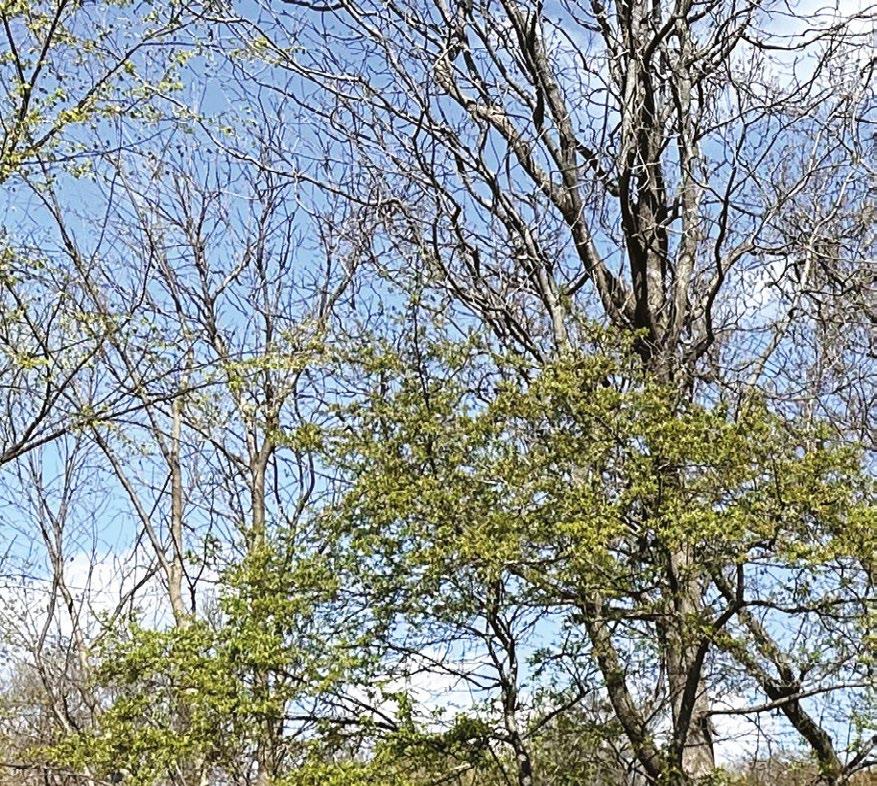






















































































































































































































































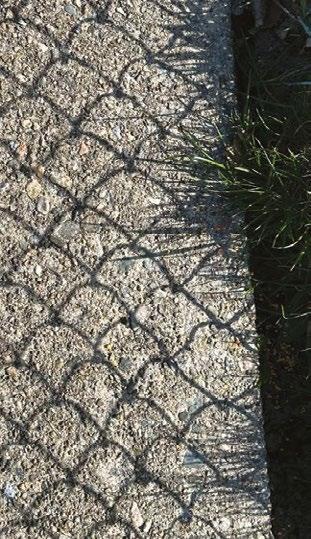



























































































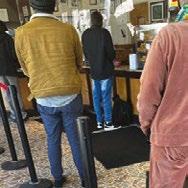


























































































































































































































































































































































































































































































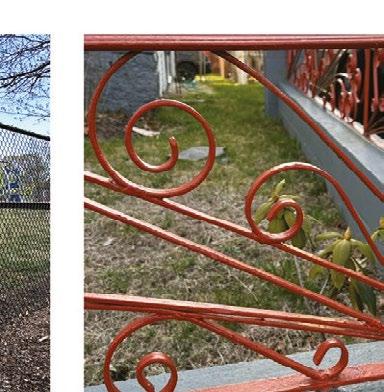





















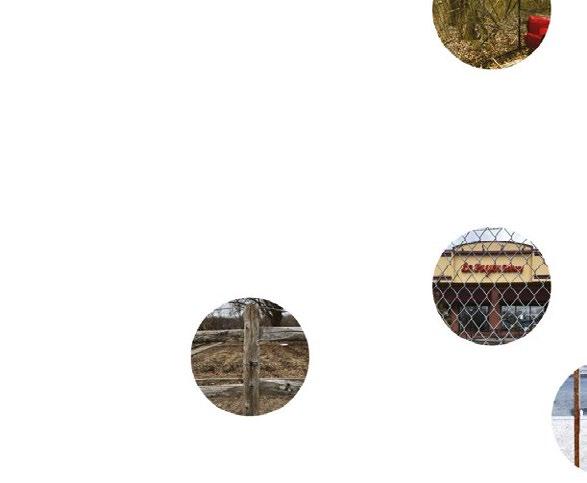































































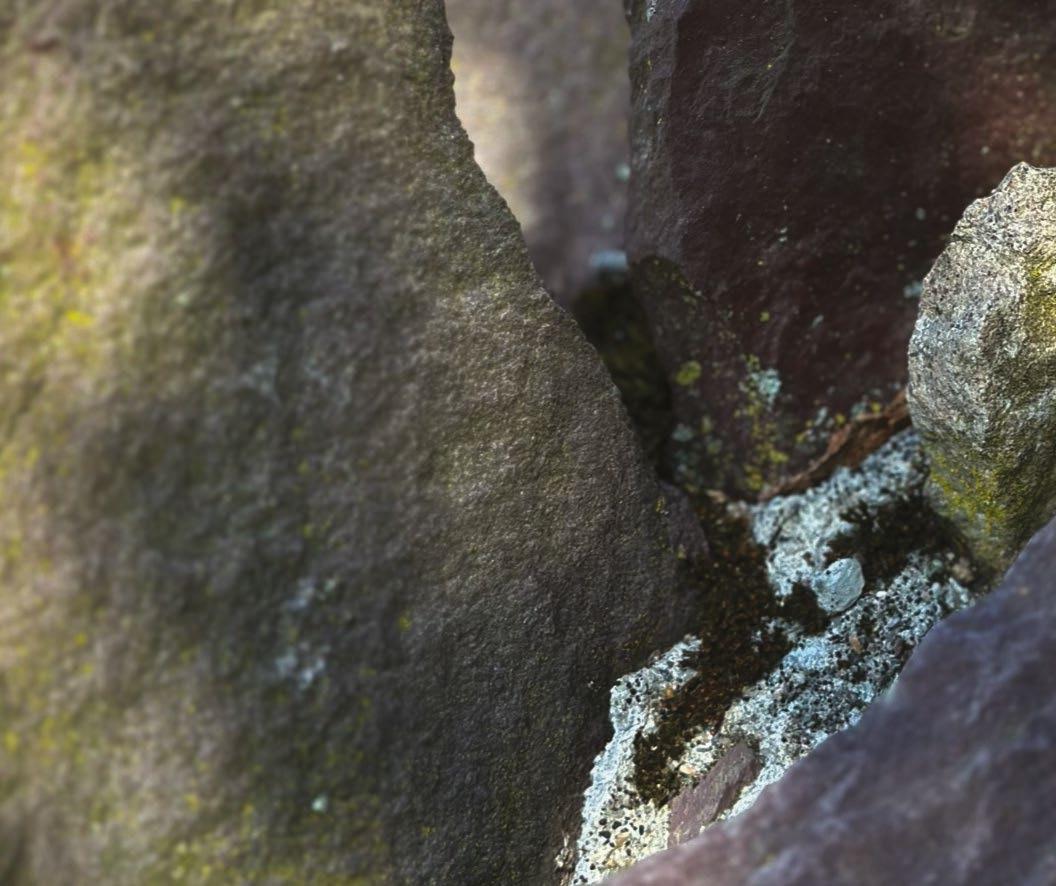































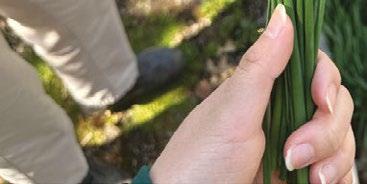





































May 02, 2023
We heard comments early on that signaled the frustration of neighbors and locals with outsiders including developers and city officials, who’s proposed projects offer nothing to the community – or from the developer’s perspective gave a great deal including a fresh new MLK mural. The neighbor’s response to such an offer was disgust, even humiliation. I am bewildered by the minds of people who are so unequipped to walk outside their space of privilege. Murals cannot seriously be considered honest alibis for opportunism and profit-making. “Come live at my house, come spend a day seeing what I see”before you go around offering solutions to what we need - was the cry of a neighbor as she explained the incongruence of what was being offered. Deafness seems rampant among professionals and investors who can scarcely regard a place as something other than square feet of real estate.
Walking afforded us at least a more honest reply to the invitation to “come see our neighborhood.” We were greeted from a cop car by the familiar face of Officer Eric whom we met one rainy afternoon at the Gallivan Center for children. We were even celebrated by the Facebook page patroned by Mattapan neighbor David Venter and the Friends of Culbert Street, initiated to voice their opposition to new development on their block. Walking along Morton Street we learned the stories behind the dance studio of Kywon Edwards, Paul William’s tailor shop, and Marcia Perry Satchell’s Jamaican restaurant. We visited the Audubon Society´s Nature Center, the Teen Center, Gallivan Community Center, Mildred Avenue Community Center, the Fowler Clarke Epstein Farm, and the Mattapan Library, and got to know their organizers and activities. We witnessed services in churches such as Our Lady of Mount Carmel, Jubilee Church, and Morningside Baptist Church. The Neponset River, Blue Hill Ave, and Morton Street became frequent paths and familiar sites.
Recording observations and impressions in a Carnet du Voyage- essentially a traveling journal – folded itself nicely into insightful research avenues and engagements with people. Artifacts have served to unlock something new about a place. For example, we have learned that what can be discovered through the lenses of fences and food is surprisingly complex and nuanced. Giving others authorship to document Mattapan as they see it is also a strategy to gain access to what our own professional deformation, background and foreignness inhibit us from seeing. And finally, partnering with local institutions and NGOs working in Mattapan allowed students to engage existing collaborations while uncovering new perspectives.

Chez-Vous Roller Skating Rink
Roller Skating Rink
Chez-Vous
One cold night in February we went into Chez Vous, a roller-rink that’s been operating since 1933. We arrived as it was opening for the evening, and got an opportunity to gain our balance before crowds started trickling in. The first wave of patrons was a group of courageous kids who held onto the railing and each other as they learned to skate. As more experienced skaters darted across the floor, it became a playful maze as everyone made room to accommodate each other.
One cold night in February we went into Chez Vous, a roller-rink that’s been operating since 1933. We arrived as it was opening for the evening, and got an opportunity to gain our balance before crowds started trickling in. The first wave of patrons was a group of courageous kids who held onto the railing and each other as they learned to skate. As more experienced skaters darted across the floor, it became a playful maze as everyone made room to accommodate each other.
Skating in circles to R&B and hiphop classics, we paused to talk to the employees about the history of the rink. A staple of the neighboring Mattapan and Dorchester communities, it attracts patrons from all over the Greater Boston area as well as visitors from out-of-state. Chez Vous was originally owned by Bernard Leventhal, who sold it in the 1990s to his friend Edward Toney, Sr. It’s now run by Toney Sr.’s sons, Derick Foster-Toney and Edward Toney, Jr.

Skating in circles to R&B and hiphop classics, we paused to talk to the employees about the history of the rink. A staple of the neighboring Mattapan and Dorchester communities, it attracts patrons from all over the Greater Boston area as well as visitors from out-of-state. Chez Vous was originally owned by Bernard Leventhal, who sold it in the 1990s to his friend Edward Toney, Sr. It’s now run by Toney Sr.’s sons, Derick Foster-Toney and Edward Toney, Jr.
We went to head home as it was getting crowded, regrettably leaving before we were told the lights would go down and the disco ball would spin. On our way out we stopped to chat with Gerard, a Mattapan resident who was hanging around outside. As a challenge, he successfully listed the Red Line train stops from Ashmont to Harvard Square, portending our ride home.


Inkoo Kang MDes Ecologies 23
Niko Tian MDes Ecologies 23
Runke Luo
MLA AP & MDes Publics 23
Project Goal
Our project aims to collect food memories and investigate the food networks, learning from research and fieldwork from Mattapan’s Neighborhood. Through two Chapters, we explore the past and present of selected Mattapan food spots, envisioning the unique potentials within the structure of their business operation, diversity of products, social value, and government support.
C H A P T E R
Food Memories
This chapter collects food memories on Mattapan streets and neighborhoods, gathering a unique feeling of belonging, affection, and migration of their culture through the lens of food. Our interest is to investigate in person the question of " How do food memories define in the neighborhood of Mattapan?"
Food memory associates particular foods with past experiences, emotions, and events. It is the ability to recall memories and emotions triggered by the taste, smell, or appearance of certain foods. We encountered many friendly individuals during the trip willing to share their 'food memories.' In the form of a collection of their favorite food, we opened up a new wonderland of Mattapan in an intangible way.
Claudia age 50+
Customer of Brothers' Deli
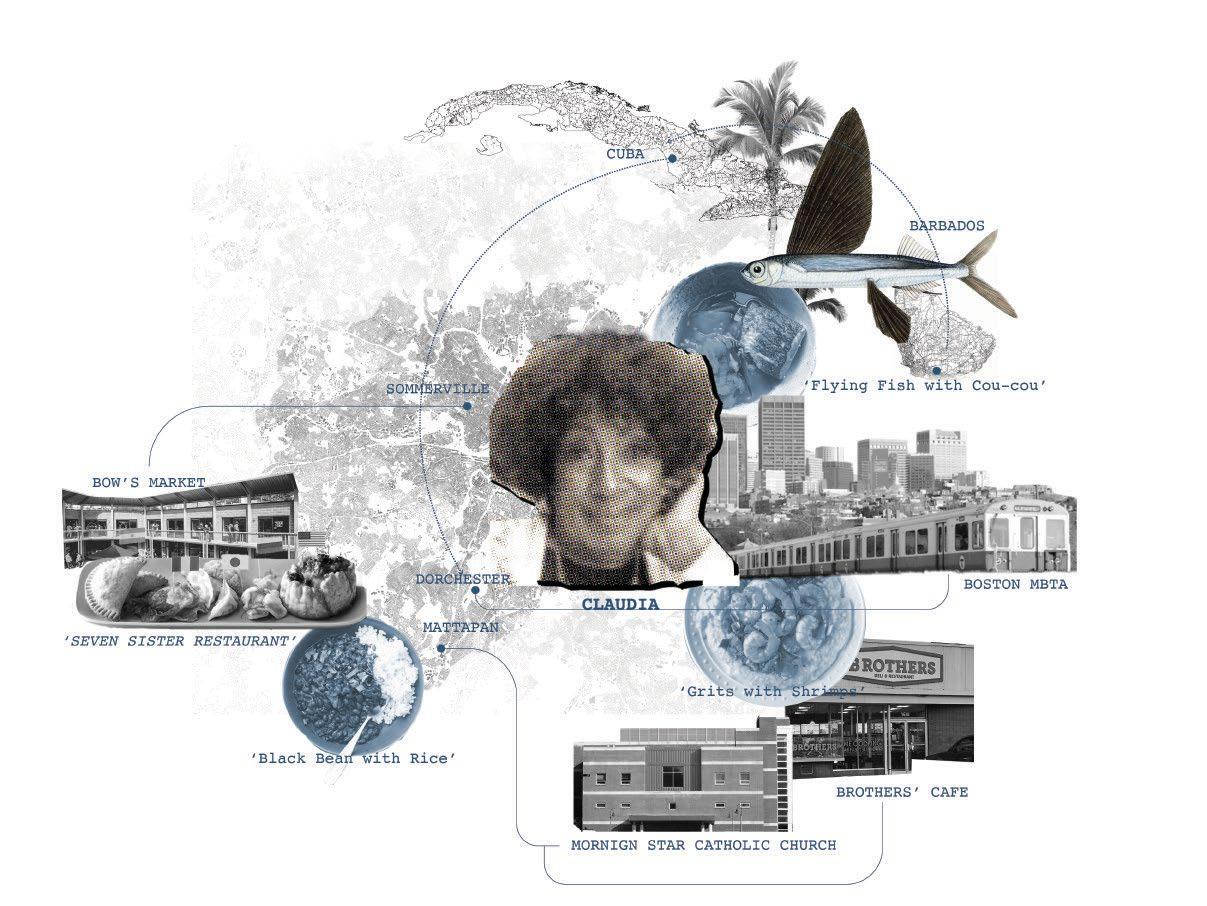
Claudia mentioned two restaurants that cook the soy ginger shrimp in two different ways, representing the fusion of Chinese and Caribbean flavors and how different cultural influences can come together to create something new and unique.

Black rice soy ginger shrimp is a dish that combines the flavors of Asian and Caribbean cuisine and has become popular in the Mattapan neighborhood. Because Mattapan has a diverse community with a significant population of Caribbean immigrants, this dish reflects the diversity of the neighborhood and the blending of different culinary traditions.
The use of black rice in this dish is significant, as it is a staple in many Caribbean cuisines, including Jamaican and Trinidadian. The use of soy sauce and ginger, which are not typically found in Caribbean cooking, adds a distinct Chinese flavor to the dish and reflects the influence of the growing Chinese community in Mattapan. The shrimp is then marinated in the same sauce and sautéed until cooked.
Eric age 40+
customer of Brothers' Deli
We met Eric at the Brothers' Deli during lunchtime in the queue. He was in a sporty outfit with his daughter, who just won the dancing competition in PA. He heard us interviewing people, so he was very willing to share his story.

Salisbury Steak with mac and cheese was a dish commonly found at Brother's Deli before the pandemic. Salisbury Steak* is a dish that originated in the United States and typically consists of a ground beef patty that is seasoned and cooked, then served with brown gravy. The dish consists of macaroni noodles and a cheese sauce, which are typically baked together in the oven.
At Brother's Deli, the Salisbury Steak with mac and cheese is served as a hearty and satisfying meal that reflects the restaurant's commitment to serving classic American comfort food. The dish has become popular with locals in Mattapan and beyond, and is a testament to the cultural diversity and culinary traditions of the neighborhood.
*The dish is believed to have been named after James Salisbury, a 19th-century American physician who advocated for a meat-heavy diet. Mac and cheese, on the other hand, is a classic American comfort food that has become a staple in many households and restaurants across the country.
Stacey age 45+
customer of Brothers' Deli
We met Stacey during our very first team visit to Mattapan. Stacey was waiting in the queue at the Brothers’ Deli during lunchtime. When we first walked in, she was the first person I saw. She dressed in red and smiled at us friendly. She was very excited to share her appreciation for the Brothers'Deli.

Griot is a beloved dish that reflects the cultural heritage and culinary traditions of the Haitian community. In Haitian culture, Griot is often served at special occasions and celebrations, such as weddings, baptisms, and holidays. It is also a popular street food in Haiti and can be found at local markets and food stands.
Griot is made with chunks of pork shoulder that are marinated in a blend of citrus juices and spices, such as garlic, thyme, and scallions. The marinated pork is then fried until crispy on the outside and tender on the inside. Griot is typically served as a main dish with rice and beans, fried plantains, and pikliz, a Haitian condiment from pickled vegetables and hot peppers. The combination of the crispy, flavorful pork, starchy rice, sweet plantains, and tangy pikliz makes for a delicious and satisfying meal.
CJ age 55+
Mattapan Resident

CJ is a line chef currently working in Boston. He loves to make different kinds of food for others, but for himself, he prefers simple and more towards vegetarian.

The black bean sauce is savory and slightly spicy, while the plantains add a sweet, caramelized flavor. This combination of these mixed flavors is popular in Caribbean and Latin American cuisine and is sure to appeal to those who enjoy bold, flavorful dishes. Besides, this dish has the versatility to be served as a vegetarian or vegan dish by omitting the meat and using vegetable stock instead of chicken stock. This makes it a great option for those who follow a plant-based diet or are looking for a healthy and filling meal. The ingredients for the dish are relatively easy to obtain, and the preparation is straightforward, making it a great option for busy families or those who want a delicious meal without a lot of fuss.
Joan age 30+
The Owner of Tejeda's Family Market
Joan is the owner of Tejeda’s Family Market, who was originally from the Dominican Republic. Mangu is one of the food that he loves the most from this home country for lunch.

Mangu is a beloved dish in the Dominican Republic, and it has become popular in many Dominican communities throughout the world, including in Mattapan. Mangu is a simple but flavorful dish made from mashed plantains that are boiled and then mashed with butter, oil, and a little bit of milk or cream. It is a filling and satisfying dish perfect for breakfast or brunch, often accompanied by eggs, fried cheese, and salami or other meats.
Camilia age 35+
Customer of Tejeda's Family Market
Camila was one of the customers at Tejeda’s Family Market, who was newly from the Dominican Republic. She bought a huge king avocado from the store, and told us she is going to make her lunch with chicken.

Pollo Guisado is a traditional Dominican stewed chicken dish that is flavorful and hearty, typically served with rice, beans, and plantains. It is a popular dish in many parts of the Caribbean and Latin America, including the Dominican Republic and other Spanish-speaking countries.
In Mattapan, which has a large Caribbean and Latin American population, Pollo Guisado and other traditional dishes are likely to be popular among people who are looking for familiar, comforting flavors from their home countries. Additionally, the use of avocado in the dish adds a fresh, healthy element that may appeal to health-conscious diners or those looking for more nutritious options.
Dimitri
age 35+
The Owner of Cafe Juice Up
Dimitri is the owner of Cafe Juice Up. He joined the store management in 2019, and successfully lead the business through the pandemic. He is a meat lover, and embrace the fusion of the American and Carribean cuisines.

Ragoût de boeuf is a dish that originated in France and is also popular in other European countries. However, it has been adapted and modified in many countries, including the Caribbean and the Americas, such as Haiti, Martinique, Guadeloupe, and Canada. In the Caribbean, Ragoût de boeuf is often made with local ingredients and spices, giving it a distinct Caribbean flavor.
It is a hearty and flavorful beef stew made with beef, potatoes, carrots, and other vegetables, and flavored with spices such as garlic, bay leaves, and clove. In Haiti, it is known as "Ragout Tchaka" and is often served with rice, plantains, or bread. When it comes to the United States, Ragoût de boeuf is often referred to as beef stew and is a popular comfort food dish, particularly in colder months. It is usually made with similar ingredients as the Caribbean version but may be seasoned differently depending on the regional cuisine.
Daniela age 40+
Customer at Le Foyer's Bakery
Daniela was a fashion woman with a flowery dress who came to the store right after Easter Church Day from Jubilee. She always came to Le Foyer for her favorite beef patties.

Rice and beans is a staple dish in Haiti, and it is a significant part of Haitian cuisine and culture. In Haitian culture, rice and beans is often considered a comfort food, and it is a common dish that is served for both everyday meals and special occasions. It is typically made with red or black beans and long-grain rice, and is often flavored with spices such as garlic, onion, thyme, and parsley. Depending on the region and personal preference, the dish may also include other ingredients, such as meat or vegetables. In Mattapan, many Haitian restaurants and delis serve rice and beans, and it is a popular menu item for both Haitian and non-Haitian customers. The dish is often served as a side with other Haitian dishes, such as griot, fried plantains, or pikliz (a spicy Haitian coleslaw).
Engëll age 25+
Mattapan Resident
Engell is a hairdresser at a Barber store in Mattapan next to Tejeda. He came to the US a year ago. He told us his English was not very fluent, but he was still delighted to share his story.

La Bandera is a popular and traditional dish in the Dominican Republic. It translates to "the flag" in English, and the dish is named for its resemblance to the colors of the Dominican Republic flag. It typically consists of white rice (arroz blanco), beans, and meat, such as chicken or beef, along with salad and fried plantains on the side. The dish is not only delicious, but it also represents the pride and patriotism of the Dominican people.
In Mattapan, La Bandera is often served at community events, family gatherings, and celebrations of Dominican culture. It is a dish that brings people together and is enjoyed by all ages. For the local Dominican community, La Bandera represents a connection to their cultural roots and is an important symbol of their identity and heritage.
age 45+
Customer at Le Foyer's Bakery
Mike was a customer at Le Foyer Bakery. He was from Taiwan, working in Dorchester. He told us his colleague strongly recommended this Bakery to him, so he came very often. He was a really nice guy who bought us some patties! <3

Haitian patties, also known as “Pate Kreyol,” have cultural significance to the Haitian community in Mattapan. They are a reminder of home and a way for Haitians to connect with their culture and heritage. The Haitian patties at La Foyer's Bakery are made with a flaky, buttery crust filled with a savory and well-seasoned mixture of ground beef, chicken, fish, onions, peppers, and other ingredients.
Significantly, La Foyer's Bakery is a Haitian-owned business that has been serving the community for many years. Supporting local businesses is important for the economic development of the area and helps to build a strong sense of community. For many Haitians living in the United States, authentic hometown food is a way to stay connected to their roots, and Haitian patties are a delicious and accessible way to do so.
Jerry age 40+
Customer at Le Foyer's Bakery
Jerry was a customer at Le Foyer’s Bakery with his family after Easter's Church Day. He is also an active influencer on social media. He came with his families to the Bakery and was dressed in an impressive bright pink suit on Easter Church Day.

White bean soup, also known as "Soupe au Pistou," is a traditional dish that originated in France and is also popular in Haiti and other Caribbean countries. In the Haitian community in Mattapan, white bean soup is considered a staple dish that is often enjoyed during family gatherings, holidays, and other special occasions. White bean soup is typically made with white beans, vegetables, and meat, such as beef or pork. The soup is flavored with spices such as garlic, thyme, and parsley, and often includes a "pistou" or pesto-like sauce made with garlic, basil, and olive oil, which is added to the soup just before serving.
White bean soup, also known as "Soupe au Pistou," is a traditional dish that originated in France and is also popular in Haiti and other Caribbean countries. In the Haitian community in Mattapan, white bean soup is considered a staple dish that is often enjoyed during family gatherings, holidays, and other special occasions. White bean soup is typically made with white beans, vegetables, and meat, such as beef or pork. The soup is flavored with spices such as garlic, thyme, and parsley, and often includes a "pistou" or pesto-like sauce made with garlic, basil, and olive oil, which is added to the soup just before serving.
In the Haitian community in Mattapan, white bean soup is not only a delicious and nourishing meal, but it also holds cultural and symbolic significance. It is often seen as a symbol of unity and community, as it is a dish that can bring families and friends together. Additionally, white bean soup is often prepared in large batches and shared with neighbors and community members as a gesture of goodwill and generosity.
In the Haitian community in Mattapan, white bean soup is not only a delicious and nourishing meal, but it also holds cultural and symbolic significance. It is often seen as a symbol of unity and community, as it is a dish that can bring families and friends together. Additionally, white bean soup is often prepared in large batches and shared with neighbors and community members as a gesture of goodwill and generosity.
30+
Customer at Le Foyer's Bakery
Tulu was a customer at Le Foyer’s Bakery, who originally was from Nigeria. He came to US about seven years ago, and he was very excited to share us his hometown food, "Let me find the best picture to show you!"

community in Mattapan. It is a one-pot dish made with rice, tomatoes, onions, and a variety of spices, including chili peppers, ginger, and garlic, and it is often served with chicken, beef, or fish and may also be accompanied by a side of fried plantains or coleslaw.
Jollof rice is a popular and appreciated by the African community in Mattapan. It is a one-pot dish made with rice, tomatoes, onions, and a variety of spices, including chili peppers, ginger, and garlic, and it is often served with chicken, beef, or fish and may also be accompanied by a side of fried plantains or coleslaw.
In the African community in Mattapan, Jollof rice is often prepared for family gatherings, celebrations, and other special occasions. It is considered a staple dish and a symbol of African culture and identity. Many African restaurants and food markets in Mattapan offer Jollof rice on their menus, making it easily accessible to those who crave it.
In the African community in Mattapan, Jollof rice is often prepared for family gatherings, celebrations, and other special occasions. It is considered a staple dish and a symbol of African culture and identity. Many African restaurants and food markets in Mattapan offer Jollof rice on their menus, making it easily accessible to those who crave it.
Jollof rice also holds cultural significance beyond its taste and popularity. The dish is known to have originated from the Jollof Empire, which was a West African state that existed in the 14th century.* The dish has since become a symbol of African unity and pride, as well as a way for African immigrants and their descendants to maintain a connection to their cultural heritage.
Jollof rice also holds cultural significance beyond its taste and popularity. The dish is known to have originated from the Jollof Empire, which was a West African state that existed in the 14th century.* The dish has since become a symbol of African unity and pride, as well as a way for African immigrants and their descendants to maintain a connection to their cultural heritage.
* Lola Christina Alao. 2022. Google Doodle Celebrates Jollof Rice: What Is the Dish and What Are Its Origins? Evening Standard.
* Lola Christina Alao. 2022. Google Doodle Celebrates Jollof Rice: What Is the Dish and What Are Its Origins? Evening Standard.
C H A P T E R
Food Networks
This chapter expands research and fieldwork toward food networks. It explores selected historic grocery and food spots in Mattapan and investigates how they are connected with various entities both in and out of the neighborhood, what challenges and adaptation their business operation have gone through, and how these places are becoming social anchors or new social actions in the Mattapan community.
We divided this section into the food business that operate in Mattapan. Our research comes from historical archives, field visits, and interviews. It reveals a treasure.
We spoke directly with the business owners and visitors of four local restaurants in Mattapan: Brothers, Simco's, Le Foyer Bakery, and Cafe Juice Up. We also visited four grocery businesses on different scales, including Tejeda's Family Market, Mattapan Fish Market, America’s Food Basket, and Daily Table Grocery Mattapan.
We aimed to express the investigated micro and macro scales’ networks surrounding each business graphically with collage images, timelines, and maps, and celebrate the uniqueness, adaptability, and localness of the places through the lens of food.
The Main Ingredient of Haitian Cuisine
Haitian cuisine is an integral part of the cultural landscape of Mattapan, Boston’s neighborhood with the largest Haitian immigrant population. The food reflects the country's Afro-Caribbean heritage and is characterized by bold flavors, spices, and tropical ingredients. Traditional Haitian dishes often include rice and beans, plantains, yams, and various types of meat such as chicken, beef, and goat. Haitian cuisine is also known for using spicy peppers and flavorful marinades. In Mattapan, you can find numerous restaurants and markets offering authentic Haitian dishes, providing a culinary experience that transports you to the vibrant and diverse country of Haiti.

Haitian cuisine blends African, French, and Caribbean culinary traditions that reflect the country's diverse cultural heritage. Haitian cuisine is known for its bold and spicy flavors, featuring a variety of ingredients such as herbs, vegetables, and meats. Some of the most commonly used ingredients in Haitian cooking include rice, beans, plantains, yams, potatoes, and various seafood and meat such as chicken, goat, and beef. The cuisine also heavily incorporates spices and herbs such as garlic, thyme, parsley, and scallions. Additionally, hot peppers, such as habaneros, are used to give many dishes their characteristic heat and depth of flavor. Haitian cuisine also features a variety of sauces, such as pikliz, a spicy pickled vegetable condiment, and Epis, a seasoning blend used as a base for many dishes.

The Shift in Mattapan’s Caribbean Food Culture
Mattapan is the home of a diverse community with a significant population of Caribbean immigrants. Consequently, the area has seen a shift in its food culture, as Caribbean cuisine has become more prevalent. One way that Caribbean food culture has shifted in Mattapan is through the establishment of new restaurants and grocery stores that specialize in Caribbean cuisine. These businesses cater to the growing demand for Caribbean food in the area, offering dishes such as jerk chicken, oxtail, curry goat, ackee and saltfish (illustrated).
In addition to the growth of businesses specializing in Caribbean cuisine, the food culture in Mattapan has also shifted by incorporating Caribbean flavors into existing food establishments. For example, many existing restaurants and cafes in the area now offer menus incorporating Caribbean ingredients and flavors, such as plantains, jerk seasoning, and coconut milk. Moreover, the community has also seen an increase in cultural events and festivals celebrating Caribbean food culture. These events provide opportunities for the community to enjoy Caribbean food and music from their homelands, and feel a sense of community and belongings. The shift in food culture in Mattapan reflects the neighborhood’s history as the arrival city for Caribbean immigrants and the vibrant harmony of different cultures.
Mattapan's Food Network
Initially, we were drawn to the unique restaurants in Mattapan, which mostly serve Caribbean cuisine and cannot easily be found elsewhere in Boston. Upon discovering certain establishments that were frequently mentioned by locals we encountered during our walks, we assumed that they must hold significant importance for the community and made a conscious decision to explore them more deeply.
During our visits and interviews with various groceries and restaurants throughout Mattapan, we discovered that these places offer much more than just food. They serve as platforms for social interaction, promoting a sense of community and belonging, and sometimes even as a catalyst for positive change in the neighborhood. Food serves as a universal language, and these food spaces have become a space for people to converse and connect with one another, creating an interconnected network.
The food network in Mattapan begins with urban farms. The Edgewater Food Forest, Fowler Clark Epstein Farm, and other small farms scattered throughout the area help to celebrate black identity and promote community building by cultivating the land together and sharing their products with neighbors. While the amount of produce from these urban farms is only enough to be shared among neighbors for free at present, the act of growing something and having regular opportunities to communicate with neighbors in these farms is in itself invaluable.
The majority of Mattapan's food network is composed of to-go or sit-in restaurants. Quite a lot of to-go restaurants were developed due to the neighborhood's history as a throughway to Boston primarily for cars. Other sit-in restaurants with a long history have served as meeting points for locals as well. While some restaurants offer original Caribbean dishes, others have interesting stories of how they have adapted Caribbean flavors with American or other different cultures. For example, Ali’s Roti introduces the Indotrinidadian combination of Carribean and Indian tastes.


Food Notes During Field Trips
Markets in Mattapan serve as the source of ingredients for both restaurants and homecooked meals. America's Food Basket, the biggest and oldest grocery in Mattapan Square, provides locals with most of the ingredients they need. Other smaller shops deal with more specific goods such as Dominican imports (Tejeda's Family Market) or fresh fish (Mattapan Fish Market).
In addition to these establishments, there are other seemingly unrelated institutions that play roles in Mattapan's food network. For example, the Boston Public Library Mattapan Branch serves as a venue for food events or surveys on visitors' thoughts about foods. Numerous churches in Mattapan and the Mattapan Teen Center also host events and gatherings that involve food.

Simco's
With a history spanning 70 years, Simco's hot dog stand on Blue Hill Avenue has become an iconic landmark in Mattapan. As the boulevard has developed into a major throughway for those entering Boston, Simco's has been a popular spot for car riders to grab various togo meals, including hot dogs, pizza, calzones, subs, salads, seafood platters, and more. The old and large signage of Simco's proclaiming "World's Largest Hot Dog" is a recognizable symbol of arrival at Mattapan Square.
Simco's has naturally become ingrained in the minds of all residents of Mattapan as a representative restaurant, with many recalling their own memories from days gone by. Although their menu does not specifically reflect the ethnic features of the local population, it implies the neighborhood's history as the gateway to Boston, along with the development of the roadways. As a recognized local landmark, Simco's also received financial assistance from the Mattapan Board of Trade during economic hardship brought on by the pandemic.

Brothers'Deli
Brothers is a beloved casual deli located in the heart of Mattapan Square that has been serving the community for over 40 years. Founded by two brothers from an Italian immigrant family, the deli first started as a mixture of Greek and Jewish-style deli food to cater to the then-dominant Jewish population in the area. As Mattapan's demographic shifted towards Caribbean immigrants, the brothers adapted their menu to focus on homecooked Caribbean dishes, including their famous lamb leg menu, which quickly became a local favorite. Despite facing financial difficulties due to supply chain disruptions after the pandemic, Brothers keeps its business with simple American breakfast menus and remains an essential social spot of the community.

Many locals continue to frequent the deli as it has become a part of their daily routine and a gathering spot for friends and neighbors. It is a unique cultural experience where striking up a conversation with strangers at the next table is not awkward. Up to date, Brothers have also served as a meeting place for politicians, community leaders, and residents. The shop's walls are adorned with numerous photos and artworks from community members.
The owner, John Papas, who is the next generation of the founding brothers and a longtime Mattapan resident himself, is committed to maintaining the shop's friendly service and strong sense of community. He feels an obligation to keep this social hub alive despite the economic difficulties the operate the business. Brothers' adaptability throughout its history is a reflection of the neighborhood's resilience and strong sense of community.
Le Foyer's Bakery
Le Foyer Bakery is a beloved Haitian bakery located near Mattapan Square that has been serving the community for over 40 years. Founded by an immigrant family from Haiti, the bakery has become an iconic destination for residents in search of traditional Haitian baked goods such as sweet bread, patties, and Haitian-style cakes for both their daily lives and special occasions. On weekends, long lines of people can be seen waiting to get their hands on Haitian patties after their religious services, while local schools regularly order from Le Foyer Bakery for their event days.
The bakery provides an authentic taste of Haitian culture to the wider community and has gained national recognition for the quality of its baked goods, including a feature on Food Network's "Diners, Driveins, and Dives" in 2018. Le Foyer Bakery has also been a significant supporter of the Haitian community in Boston, sponsoring community events and providing jobs and training opportunities to Haitian immigrants.

Cafe Juice Up
Cafe Juice Up is a newly opened fresh juice bar located in Mattapan that aims to promote healthier food and beverage options within the community. The young founders of Cafe Juice Up, Denise A. O’Marde and Fiex Thevenin, lacked prior restaurant experience but received support from the City of Boston and Commonwealth Kitchen through various programs that helped them develop the necessary knowledge and skills in the food industry. Their noble vision of a fresh juice bar and the combination of high quality and affordable prices have contributed to their success, making Cafe Juice Up a popular destination in the community, especially among the youngsters.
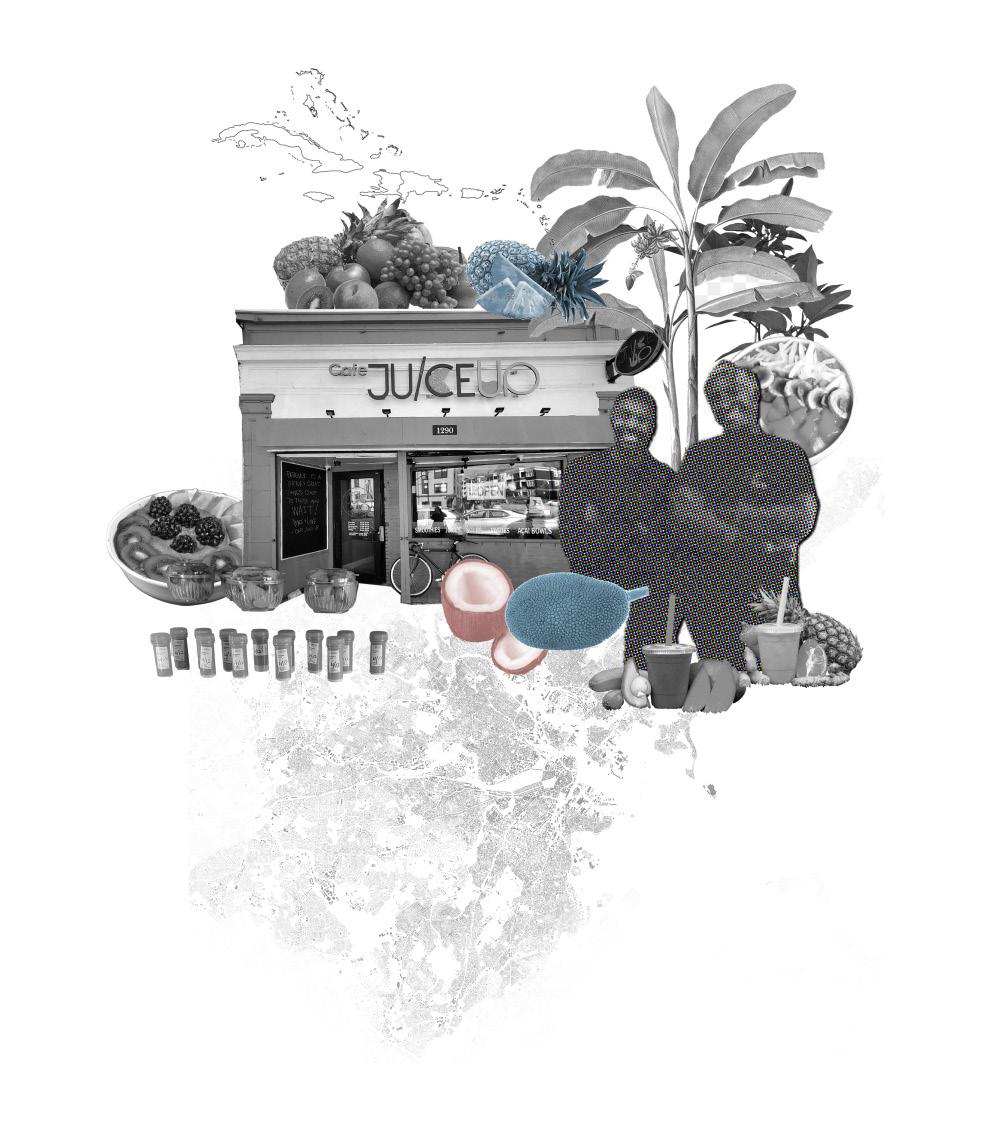
While they source their fresh fruits from various suppliers, including distributors in Chelsea, they incorporate the rich cultural heritage of Mattapan into their unique juice menus with Caribbean fruits such as Jackfruit. Despite the small size of their shop, they are also currently constructing an outdoor playground for community members. Cafe Juice Up serves as an excellent example of the community's adaptability and sense of togetherness.
America’s Food Basket
America's Food Basket is a supermarket that provides a wide range of food products, including fresh produce, meat, dairy, and pantry staples, at affordable prices. It serves as an essential resource for the community, particularly for those with limited access to transportation. The store's central location in Mattapan Square, near public transportation such as bus stations and the Mattapan T station, makes it easily accessible to residents.
Residents praise America's Food Basket for its diverse selection of ingredients, including spices and other items commonly used in Caribbean cuisine, such as yams, many of which are directly imported from Caribbean countries like Jamaica, Dominican Republic, and Haiti. As a result, the store has become a go-to destination for anyone looking to prepare Caribbean dishes.
In addition to providing affordable food options, America's Food Basket is also dedicated to supporting the community through various initiatives. They partner with local organizations and schools to offer healthy food options and nutrition education programs to students and families. Moreover, they provide job opportunities and training programs to help community members acquire job skills and secure employment.
Tejeda’s Family Market
Tejeda's Family Market is an independent, small-scale grocery store that specializes in Dominican goods. The Tejeda family had been serving the local community for over 25 years, and now, Joan, a young Dominican immigrant, has taken over the store's ownership. Joan decided to keep the original name of the market to preserve the sense of community and neighborliness. Additionally, he plans to expand the store's sitting space to create a gathering space for locals.
Tejeda's Family Market offers a diverse selection of groceries, including fresh produce, meat, dairy, and packaged goods. The store takes pride in providing a range of specialty items that are not readily available in larger supermarkets of other areas, such as Caribbean spices, plantains, and tropical fruits. Approximately 20% of its products are directly imported from the Dominican Republic, catering to the Caribbean and Latin American communities in Mattapan. Many customers travel from outside of Mattapan to visit the store.

offering delivery and catering services for events and special occasions. The counter employs Dominicans living in Mattapan or Dorchester as cooks, and their authentic Dominican tastes made the business so successful that the counter has been expanded its size rapidly after its opening.
In addition to its grocery offerings, Tejeda's Family Market has a deli counter that serves a variety of Dominican dishes made-to-order, also offering delivery and catering services for events and special occasions. The counter employs Dominicans living in Mattapan or Dorchester as cooks, and their authentic Dominican tastes made the business so successful that the counter has been expanded its size rapidly after its opening.
Most of the fish markets in Mattapan are owned and operated by Koreans, including the Mattapan Fish Market. Despite being a lesser-known ethnic group in the neighborhood, the owner, Kyu K Lee, and the manager, Myong Hui Boucher, are proud of the successful settlement of Korean business in the area. The market has a 40year history, with Kyu being the third owner, and they attribute their success to the Korean spirit of 'We'll do what you need.'
Mattapan Fish Market
Most of the fish markets in Mattapan are owned and operated by Koreans, including the Mattapan Fish Market. Despite being a lesser-known ethnic group in the neighborhood, the owner, Kyu K Lee, and the manager, Myong Hui Boucher, are proud of the successful settlement of Korean business in the area. The market has a 40year history, with Kyu being the third owner, and they attribute their success to the Korean spirit of 'We'll do what you need.'
The Mattapan Fish Market is dedicated to satisfying their customers and most of their customers are return customers. Some customers have been coming to the market since they were kids, and the owner and manager refer to older female customers as "mama" in a friendly way. Since the market primarily serves the Caribbean population, they use different names for fish species, such as calling scup "porge" and red mullet "Jamaican butterfish." They select their fish from the Boston Pier based on what Mattapan residents prefer, with red snapper and crab being the most popular species.
The Mattapan Fish Market is dedicated to satisfying their customers and most of their customers are return customers. Some customers have been coming to the market since they were kids, and the owner and manager refer to older female customers as "mama" in a friendly way. Since the market primarily serves the Caribbean population, they use different names for fish species, such as calling scup "porge" and red mullet "Jamaican butterfish." They select their fish from the Boston Pier based on what Mattapan residents prefer, with red snapper and crab being the most popular species.
In addition to fish, the market also sells ingredients for cooking fish, including yam, okra, green pepper, scallion, thyme, lime, lemon, sesame, vinegar, and seasonings. The owner and manager actually feels that the seasoning used in Caribbean dishes is quite similar to that used in Korean or Asian cuisine, including garlic, scallion, hot pepper, salt, oyster sauce, and soy sauce. They sometimes even combined Korean and Caribbean recipes, such as making kingfish head soup to share with neighbors. According to the manager, “Your mind will be open to different cultures when you open yourself up to their food.”
The market is also open to people who want to put their things in the shop, and displays many booklets and wall posters about local events and information. Beyond providing food ingredients, this market serves as a showcase for the coexistence and interaction of ethnic groups from opposite sides of the globe around food.
Daily Table Mattapan
Daily Table is a non-profit grocery store chain based in Boston, founded by Doug Rauch, the former president of Trader Joe's. Daily Table Mattapan is recently opened on the first floor of the Loop at the Mattapan Station, and the CEO of Daily Table, Rob Twyman, introduced that the vision of Daily Table is to provide affordable and healthy food to low-income households while promoting sustainability and reducing food waste.
Daily Table basically operates by sourcing unsold or surplus food from supermarkets, wholesalers, and farmers that would otherwise be wasted and repurposing it into healthy and nutritious meals and groceries. This food is sold to customers at a deeply discounted price, typically around 30-50% lower than traditional grocery stores. Daily Table's business model also relies on a combination of donated funds, grants, and revenue from sales to cover operations costs from various partners and sponsors. The organization aims to be selfsustaining through its sales revenue but also relies on donations to expand its reach and support its community programs. Daily Table Mattapan started to offer affordable and healthy food options, including fresh produce, meat, dairy, and prepared meals, and is expected to become another good option for grocery shopping. The store also offers cooking classes and nutrition education programs to help customers make healthy choices and develop cooking skills.
Reflecting on the future of foodscapes in Mattapan, this work enlightens the community development in food from ongoing events happening in varied urban scales towards planning in Mattapan.
Mattapan's foodscape has its unique depth and breadth in cultures that are worth celebrating and use it as a force to make a difference. We value the food culture, and we believe it can play a significant role in city planning, particularly within its neighborhoods that have a diverse and vibrant food culture. It can potentially contribute to economic development, community development, health and wellness, and cultural preservation.
First, the food industry is a significant contributor to the local economy, and the growth of the food sector can create job opportunities and boost local businesses. By promoting the food culture in Mattapan, the city can attract more visitors and encourage investment in the neighborhood.
Second, food is an essential part of community building, and food-related events and initiatives can bring people together, fostering a sense of community and connection. The city can leverage food culture to promote social cohesion and create opportunities for residents to engage with each other and celebrate their cultural heritage.
Third, access to healthy food is a critical determinant of health, and food culture can play a significant role in promoting healthy eating habits. By encouraging the growth of healthy food options in Mattapan, the city can help to improve the health outcomes of its residents.
Lastly, food is often an integral part of cultural heritage, and by promoting food culture, the city can help to preserve the cultural traditions of Mattapan's diverse communities. This can be done through initiatives such as food festivals and events that celebrate the different cuisines of the neighborhood. By leveraging the strengths of the neighborhood's food culture, the city can create a more vibrant and sustainable community for its residents.








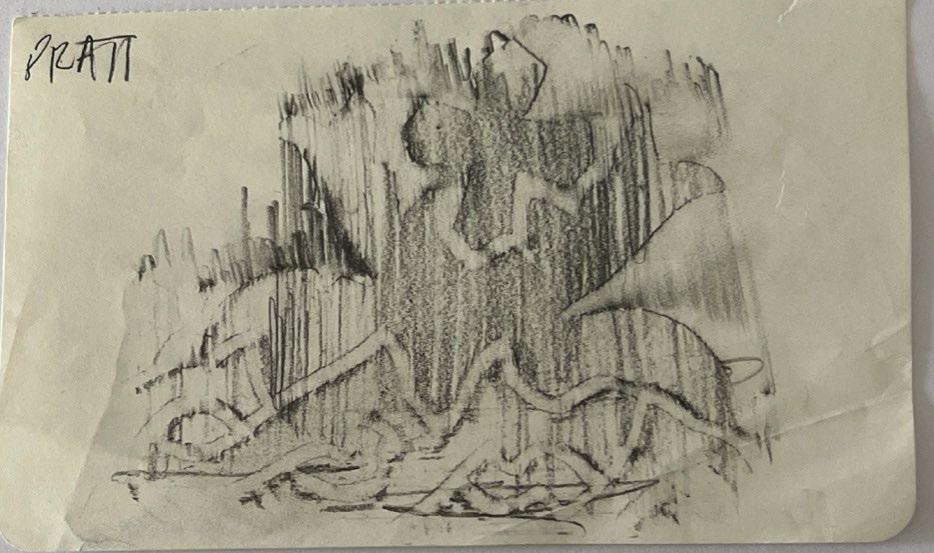





Jamaican Restaurant
Blue Mountain

On March 31st, 2023, we had the pleasure of visiting the Blue Mountain Jamaican Restaurant located on Morton Street, which sits at the end of a bridge over the railroad tracks.
Named a er the highest mountain peak in Jamaica, this establishment boasts the best Jamaican Jerk Chicken in town. The owner, Marcia Perry Satchell, also a real estate agent based in Dorchester, opened this business prior to the pandemic. Fortunately, the to-go restaurant was not severely impacted and now their successful delivery service is expanding rapidly.
















TABLE OF CONTENTS
TEAM
ENGAGEMENT
PARTNERS
GAME INTRODUCTION
GAME INSTRUCTIONS
PATH
PLAYERS
PLACES
GAME CARDS
TEAM

ALEXANDRA PO BAE PAK BARNES
Alexandra Po Bae Pak Barnes (she/her) is a Master in Design Studies candidate at the Harvard Graduate School of Design. Her design and research are driven by the needs of our aging and vulnerable communities to create inclusive sociospatial environments in relation to housing development and homeownership policies, community engagement and advocacy, the shifting societal and cultural roles of families and caregivers, and environmental migration. Alexandra also has experience designing mixed-use and large-scale commercial and residential projects, like the American Airlines Campus in Dallas, Texas, and Gioa 22 in Milan, Italy. Alexandra holds a Bachelor of Architecture from Oklahoma State University. Alexandra enjoys immersing herself in nature through hiking and cycling, tending to her vast array of house plants, and playing with her sweet, funny polydactyl gray cat, Lars.


MAGGIE HOUSE
Maggie House (she/her) is a Master in Design Studies candidate at the Harvard Graduate School of Design. Her research focuses on incorporating empathy and joy into participatory design and development practices, and is guided by her passion for creating access to liberated personal and public spaces. Maggie holds a Bachelor of Architecture from the University of Tennessee Knoxville, and has experience in private architectural and interior design practice. In her spare time she likes going for long walks with her partner Aaron and playing with her orange cat George.
JESSICA WALKER
Jessica Walker (she/her) is a Master in Design Studies candidate at the Harvard Graduate School of Design (GSD). She is a Research Assistant at the Harvard GSD Just City Lab, an initiative with the Mayors Institute on City Design to provide equity and justice education to US mayors. She is a co-founder of Rural GSD, a student group focused on elevating the care and consideration of rural geographies and the people who live in them. Her studies focus on social justice through equitable development, climate resiliency, and affordable housing. Previously, Jessica worked as a designer with projects ranging from corporate interiors to large-scale lab and office campuses throughout the Greater Boston area. Jessica holds dual bachelor’s degrees in Architecture and Interior Architecture from Auburn University. In her spare time, she enjoys playing basketball with friends and neighbors.
ENGAGEMENT
MATTAPAN NEIGHBORHOOD
On February 2nd, our class journeyed to the Boston Nature Center, where we met Kim Baker and learned about the many environmental initiatives and community resources available through Mass Audubon. Boston Nature Center provides environmental education to local schools, summer camps to kids, and an on-site community garden, daycare program, and learning center. On our walking tour around their campus, Kim joyfully mentioned a new neighboring development was coming soon by Judy Cockerton and the Treehouse Foundation. The intergenerational development will offer housing to foster families and young adults, as well as many senior adults—a new educational demographic for the Boston Nature Center. Following the walk, we initiated a semester-long partnership with Boston Nature Center and Treehouse Foundation which has now manifested into an on-going engagement pilot program for Mass Audubon and Treehouse to build community through gamelike activities that foster meaningful conversation between existing and new residents and encourage folks to learn about their neighborhood.
We are immensely grateful to Boston Nature Center and Treehouse Foundation for their time, feedback, enthusiasm, and collaboration in this partnership. We look forward to continuing this engagement process beyond this course!
PARTNERS


BOSTON NATURE CENTER
Mass Audubon is the largest nature-based conservation organization in New England. Founded in 1896 by two women who fought for the protection of birds, Mass Audubon carries on their legacy by focusing on the greatest challenges facing the environment today: the loss of biodiversity, inequitable access to nature, and climate change. With more than 60 wildlife sanctuaries located across Massachusetts, it’s easy to get outdoors at a Mass Audubon.
Located just outside of downtown Boston, on the former grounds of the Boston State Hospital, the Boston Nature Center (BNC) is a community-based urban sanctuary. Trails and boardwalks traverse meadows and wetlands, home to over 150 species of birds, 40 species of butterflies, and more than 350 species of plants. Year-round programs help foster an appreciation for nature and the environment.


TREEHOUSE FOUNDATION
In 2002 Judy Cockerton established the Treehouse Foundation. As a foster/adoptive parent, educator, and social entrepreneur she saw the tremendous need for new approaches to support the success of some of our most vulnerable kids. The intergenerational Treehouse Community model is designed to help move children out of foster care and into permanent loving families, so no child ever “ages out” of foster care alone.
Consistent with our commitment to collaboration and sustainability, the Treehouse Community organizational structure includes partnership with a property developer/manager, Beacon Communities LLC; and a licensed social service agency providing foster and adoption informed services on-site, Berkshire Children and Families. Treehouse serves as visionary founder, driving foster care innovation and leading program development. Community is at the heart of Treehouse. The guiding values of respect, compassion, collaboration and commitment create a strong foundation for restoring and strengthening the well-being of children who experience foster care.
GAME INTRODUCTION
Walk Around the Block is a game that’s meant to help folks get to know one another by building curiosity and encouraging conversation between neighbors of all ages about each other and their neighborhoods.
When you play Walk Around the Block with a few friends, or even strangers, you’ll have a chance to “take a walk” through your neighborhood, getting to chat along the way about what makes you you and what makes your neighborhood so great.
Although there’s a neighborhood map provided to start off with, Walk Around the Block encourages every player to add to the map along the way, drawing in places, memories, people - anything that you love about where you live.
With a deck of cards that holds a mix of questions for both talking and drawing, some wildcards that can transport you to some of the best
places in your neighborhood, and a few questions that help you check in with the people you’re playing with to see how they’re doing, this game is meant to be a playful way to help neighbors in intergenerational communities find out more about each other, and celebrate the special things about the place they live.
GAME INSTRUCTIONS
1. Pick Your Character! Each person who wants to participate should pick a game piece, which character would you like to play as?
2. Walk Together or Take Your Own Path? Players can choose at the beginning of the game whether all of the game pieces will move together (every person’s game piece moves to the same place every turn) or if they take their own path (only one game piece moves each turn).
3. Let’s Go! Separate the card decks of different colors and lay them around the game board. Roll the die to find out which color to place the game piece on to begin. All of the pieces should start on the same tile!
4. It’s My Turn, What Do I Do? Roll the die, then move your game piece (or all of the game pieces if everyone is walking together) in the clockwise direction to the next tile that is the same color as the die color you rolled. The player will then pick up a card of the same color. At the end of your turn, pass the die clockwise. Each turn begins with a new person rolling the die and picking up a card.
5. Play How You Want! Every player who wants to answer the question or do the activity on the card that is pulled will get a chance to do so for every card that is pulled. Once every person who wants to play has answered or finishes the activity, the turn will end.
6. What Are the Star Tiles? If the game piece lands on a tile with a star, the player can choose to “Jump on a Main Street!” using the dashed path that connects to that tile. Follow the road to any tile that connects to a road, or take a stop at any of the places on the board that seem fun!
7. What’s A Round? One round will end when every person who wants to roll the die has had a turn.
8. Alright, That’s It! Players can choose at the beginning the number of rounds they want to play, or decide the game will end when the game pieces have reached a certain place on the board.
talk hablar pale







PATH
We wanted to create an engaging, accessible path for characters to take a walk around their neighborhood. Our team researched combinations of colors, patterns, and text to provide visual contrast and clarity for folks with differing levels of color discernment. We also designed vibrant yet warm color hues, fun shapes, and ways to engage the game specific to the board. For example, the star icon allows folks to jump on a main street and “visit” or talk about places they pass by along the way to a new tile. This option allows them to play the color card they land on with the star or opt for a “drive” to a tile with a different activity.

CHECK-IN RIDDLE
PLAYERS
We designed the players to achieve equitable representation of genders, abilities, interests, race, and age. We also included a cast of non-human characters to bring whimsy into the game. Folks can choose to play whichever character they want.

PLACES
We choose to represent places we discovered on our class walks or heard about from neighborhood residents. This index is only a select few of the many wonderful places in Mattapan.

BOSTON NATURE CENTER 500 Walk Hill Street

EDGEWATER FOOD FOREST 640 River Street


CAFE JUICE UP

HARVEST RIVER BRIDGE Neponset River Greenway Trail


CHEZ-VOUS 11 Rhoades Street




GAME CARDS
The activities for each card were developed through collaboration with our partners who will be facilitating the game within their community spaces.
We selected activities that represent various levels of comfort among participants from ice-breaker activities to questions or visuals that invite memory and sharing. For example, wild cards include images that you can choose to share a comment or memory about, as the images are based on real places in Mattapan. We also chose to incorporate checkin activities that allow facilitators to gauge interest and invite wellness practices when possible.
We included English, Spanish, and Haitian Creole translations as these are the most common languages spoken by Mattapan residents. As this engagement tool is still in progress, we are considering these cards as a prototype. The sentence translations will continue to be modified for clarity and accessibility. For example, we have only included the English translation for the ‘riddle’ cards until we are able to revise the riddle to be legible in all three languages.
talk hablar pale check -in comprobar chèk
draw dibujar trase wild único inik
riddle enigma
debarase
talk hablar pale
¿Tienes un animal favorito y por qué?
Do you have a favorite animal and why?
Ou gen yon bèt pi renmen e poukisa?
¿Qué tipo de verdura te gustaría cultivar y por qué?
What kind of vegetable would you like to grow and why?
Ki kalite legim ou ta renmen grandi e poukisa?
¿Cuál es tu comida favorita y por qué?
What is your favorite meal and why?
Ki manje ou pi renmen e poukisa?
¿Quién te inspira y por qué?
Who inspires you and why?
Ki moun ki enspire ou e poukisa?
¿Cuándo fue la última vez que te sorprendiste?
When was the last time you surprised yourself?
Ki dènye fwa ou te etone tèt ou?
¿Qué es algo que no cambiarías de ti?
What is something you would not change about yourself?
Ki sa ki yon bagay ou pa ta chanje sou tèt ou?
¿Qué mensaje le gustaría dar a su yo mayor o menor? ¿Por qué?
What message would you like to give your older or younger self? Why?
Ki mesaj ou ta renmen bay tèt ou pi gran oswa pi piti? Poukisa?
¿Alguna vez un extraño ha cambiado tu vida? ¿Cómo?
Has a stranger ever changed your life? How?
Èske yon etranje te janm chanje lavi ou? Ki jan?
Diríjase a su vecino, ¿cuál es una pregunta que le gustaría hacerle?
Turn to your neighbor, what is one question you’d like to ask them?
Ale bò kote frè parèy ou, ki kesyon ou ta renmen poze yo?
draw dibujar trase
¡Dibuja algo que te guste del lugar donde vives!
Draw something you love about where you live!
Desine yon bagay ou renmen sou kote w ap viv la!
¡Dibuja algo que definitivamente debería estar en un mapa de tu vecindario!
Draw something that should definitely be on a map of your neighborhood!
Trase yon bagay ki ta dwe definitivman sou yon kat jeyografik nan katye w la!
¿Puedes dibujar algo que te gusta hacer los fines de semana?
Can you draw something you like to do on the weekends?
Èske ou ka desine yon bagay ou renmen fè nan wikenn yo?
¡Dibuja algo que te guste del lugar donde vives!
Draw something you love about where you live!
Desine yon bagay ou renmen sou kote w ap viv la!
¿Puedes dibujar tu planta favorita y compartir por qué es tu favorita?
Can you draw your favorite plant and share why it is your favorite?
Èske ou ka desine plant ou pi renmen epi pataje poukisa li se pi renmen
¡Dibuja un animal que hayas visto en tu vecindario! ¿Te gusta este animal? ¿Por qué o por qué no?
Draw an animal you’ve seen in your neighborhood! Do you like this animal? Why or why not?
Desine yon bèt ou te wè nan katye w! Ou renmen bèt sa? Poukisa oswa poukisa pa?
¡Dibuja tu lugar favorito al aire libre! ¿Por qué te gusta?
Draw your favorite outdoor place! Why do you like it?
Desine kote ou pi renmen deyò! Poukisa ou renmen li?
¡Dibuja el jardín de tus sueños! Si pudieras plantar lo que quisieras, ¿qué sería?
Draw your dream garden! If you could plant anything you wanted, what would it be?
Desine jaden rèv ou! Si ou ta ka plante nenpòt bagay ou vle, kisa li ta?
Dibuja una cosa por la que más estés agradecido en este momento.
Draw one thing you’re most grateful for in this moment.
Desine yon bagay ou pi rekonesan pou moman sa a.
riddle enigma
¿Qué tipo de flores hay en tu cara?
Tulipanes (Dos Labios).
¿Qué tipo de flores te gustan?
What kind of flowers are on your face?
Tulips (Two Lips).
What kind of flowers do you like?
Ki kalite flè ki sou figi ou?
Tulip (De lèv).
Ki kalite flè ou renmen?
¿Qué tiene mucho ladrido pero no muerde?
Un árbol.
¿Tienes un árbol favorito?
What has lots of bark but no bite?
A tree.
Do you have a favorite tree?
Ki sa ki gen anpil jape men pa gen okenn mòde?
Yon pye bwa.
Ou gen yon pye bwa pi renmen?
¿Qué es pequeño, rojo y tiene que susurrar?
Un rábano picante.
¿Cuál es tu verdura favorita?
What is small, red and has to whisper?
A hoarse radish.
What’s your favorite vegetable?
Ki sa ki piti, wouj epi ki gen chichote?
Yon refor.
Ki legim ou pi renmen?
¿Cómo llegan los árboles a Internet?
Se conectan.
Dibuja un árbol que veas a menudo.
How do trees get onto the Internet?
They log in.
Draw a tree you see often.
Ki jan pye bwa yo antre sou entènèt la?
Yo konekte.
Desine yon pye bwa ou wè souvan.
Soy una semilla con tres letras en mi nombre. Quita los dos últimos y sigo sonando igual.
Guisante.
¿Alguna vez has tenido una semilla en tu mano?
I am a seed with three letters in my name. Take away the last two and I still sound the same. Pea.
Have you ever held a seed in your hand?
Mwen se yon grenn ki gen twa lèt nan non mwen. Wete de dènye yo epi mwen toujou son menm bagay la. Pwa.
¿Qué mamífero es el mejor en el béisbol?
Un murcielago.
¿Tienes un deporte que te gusta practicar?
What mammal is the best at baseball?
A bat.
Do you have a sport you like to play?
Ki mamifè ki pi bon nan bezbòl?
Yon baton.
Èske w gen yon espò ou renmen jwe?
¿Qué animal tiene más vidas que un gato?
¡Una rana, croa todas las noches!
¿Escuchas algún animal o insecto haciendo sonidos divertidos en la noche?
What animal has more lives than a cat?
A frog, it croaks every night!
Do you hear any animals or insects making fun sounds at night?
Ki bèt ki gen plis lavi pase yon chat?
Yon krapo, li kwoke chak swa!
Las perlas de la noche, robadas en la luz más clara del día.
Rocío
¿Dónde has encontrado rocío?
The Pearls of night, stolen in the clearest light of day.
Dew
Where have you encountered dew?
Bèl pèl lannwit, yo vòlè li nan limyè ki pi klè nan lajounen. Lawouze.
Ki kote ou te rankontre lawouze?
¿Qué tiene boca pero no puede masticar?
Un rio.
¿Qué te gusta de los ríos?
What has a mouth but cannot chew?
A river.
What do you like about rivers?
Ki sa ki gen yon bouch men ki pa ka moulen?
Yon rivyè.
Kisa ou renmen nan rivyè?
¿Te has tomado un vaso de agua hoy? ¡Tomemos un descanso de agua!
Have you had a glass of water today? Let’s take a water break!
Eske ou te gen yon vè dlo jodi a? Ann pran yon ti poz dlo!
¡Tomemos un respiro! Todos respiren profundamente y exhalen profundamente.
Let’s take a breather! Everyone take a deep breath in, and take a deep breath out.
¿Alguna vez has crecido un ¿verdura? Comparte un ejemplo.
¡Levántate y muévete! Ponte de pie y estira las piernas.
Get up and move! Stand up and stretch your legs.
Leve epi deplase! Leve kanpe epi detire janm ou.
¡Movamos el cuerpo! Puedes ponerte de pie, temblar, tararear. ¿Qué te gusta hacer para aliviar el estrés?
Let’s move our bodies! You can stand up, shake, hum. What do you like to do to relieve stress?
Ann deplase kò nou! Ou ka leve kanpe, souke, hum. Kisa ou renmen fè pou soulaje strès?
¿Cómo estás? ¡Dirígete a la persona que está a tu lado y pregúntale cómo ha estado su día!
How are you doing? Turn to the person next to you and ask them how their day has been!
Koman ou ye? Vire jwenn moun ki bò kote w la epi mande yo kijan jounen yo te ye!
¡Construyamos confianza! Todos posan como superhéroes durante 10 segundos.
Let’s build confidence! Everyone pose like a superhero for 10 seconds.
Ann bati konfyans! Tout moun poze tankou yon superhero pou 10 segonn.
Cerremos los ojos durante 20 segundos e imaginemos nuestro lugar favorito. Una vez que los ojos estén nuevamente abiertos, si desea, comparta lo que imaginó.
Let’s close our eyes for 20 seconds and picture our favorite place. Once eyes are back open, feel free to share what you pictured if you would like to.
Ann fèmen je nou pou 20 segonn epi imajine kote nou pi renmen an. Yon fwa je yo tounen louvri, santi yo lib yo pataje sa ou foto a si ou ta renmen.
¡Tomemos un momento para mover nuestros cuerpos y jugar al pato-pato-ganso!
Let’s take a moment to move our bodies and play duck-duck-goose!
Ann pran yon ti moman pou n deplase kò nou epi jwe kanna-kana-zwa!
¿Hay nubes en el cielo? ¡Vamos a observar las nubes! ¿Qué ves?
Are there clouds in the sky? Let’s do some cloud-watching! What do you see!
Èske gen nyaj nan syèl la? Ann fè kèk nyaj gade! Kisa ou we!
wild único





















Gallivan Community Center Harvard Campus Tour
On Thursday April 27th, Maggie, Cherry, and Jenny hosted a group of ten students from the Gallivan Community Center alongside their supervisor Markeece on a tour around the Harvard University Campus.


Project and Develop
Stacey Berman and Marcel MerwinIn mid-January, we logged on to a Zoom call. A small menagerie of faces projected across our laptop screens. Pinned to the right were developers, with attendees filling two pages worth of virtual space. We buried ourselves behind black screens, just posting our first names. Responding to the urgent need for more housing in the Greater Boston Area, the architects and developers unfurled plans for a new, one-hundred-percent affordable housing project in Mattapan. They didn’t get far before attendees started asking questions: Why didn’t you add more parking? What will happen to my view? Have you ever seen Blue Hill Avenue at rush hour? Don’t just stop by for an hour, come live at my house, come spend a day seeing what I see. Presented as a critique of the architects and developers who did drive-by site visits, we took this frustrated invitation as a provocation: what if it were possible to s ee what someone else sees? How can we create a wider lens?
Our approach was direct: in April, we distributed disposable cameras to Mattapan community members. Through photographs, neighbors could capture and share their own experiences and perspectives of their home –what they see when they look at Mattapan. With each camera, we included a small notebook with a handful of prompts to help guide participants, and as we explained our agenda we made clear that it was intended to be a fun opportunity to share their voice and vision. While there were a few people who demurred, most residents we talked to were excited and some even signaled that they already knew exactly what they were going to record. We started by handing-off cameras to a small nucleus of people we’d met, and encouraged them to give cameras to their friends. The network expanded as we walked, stopping strangers and asking if they’d like to participate.


Ultimately, a constellation of nearly fifty cameras landed across Mattapan.
The Zoom call we attended addressed one of many new projects and developments cropping up in Mattapan, new structures erected with the promise they will increase housing and symptomatically change the cultural make-up of the neighborhood. Most often associated with low-income families and gentrification, the terms project and development are deployed by developers with an air of confidence that masks how their projects are actually projections; their developments are still developing. In other words, the developers’ rhetorical certainty hides the unavoidable uncertainty of building something new: we project the future as we develop over time. Within the built environment, the developer controls the reins of new construction and new visions for communities, most often outside of their own. The gap between developer and community, in which the architect often waffles, leads to tone-deaf buildings where the needs of the community are neither heard nor met. The affordable units proposed on the Zoom call reflect the work of the architect and developer – based in California – who went through the motions of collecting surveys, but recognize the residents only as data points, not as individuals. Project and Develop shifts the authorship of community development from the blueprints, renderings, and cost analyses of architects and developers to the residents’ own photographic projections both of the disappearing “now” and the emerging future of Mattapan.
Analog photography requires the projection of light on film and the chemical development of an image as printed matter. It’s what you think you will see, rendered over time into a tangible print of what you saw. We think of the developing image in relation to a walk – the slow process of choosing your step, selecting the moment you capture, relying on the response of the mechanical steps to inscribe the image on film. With the limited frames

available in the disposable camera, the act of taking a photograph requires deliberation, a trait lost with the apparently endless storage of a digital camera, or more likely, a phone. Twenty-seven images offer twenty-seven chances to record Mattapan. You must slow down, look around, and pay attention.
We initially called the work Anticipatory Nostalgia, a pre-emptive grasp at recording an already fleeting moment. But, as we got cameras back, we saw photos of trash, memories of already transformed buildings, natural beauty, and daily commutes. Preservation was in conversation with a current reality, future wishes, and past desires. Widening the aperture of authorship allowed us to see what we otherwise couldn’t and pushed us to reframe our scope to what is now called Project and Develop: a collective portrait of Mattapan as it is, as it was, and as it could be.
In time for this publication, we received six cameras back. When we picked up the first batch of cameras, we simultaneously handed off two more to senior sewers, who were putting pockets in pants in the event room. Someone at the public computers overheard us describing the process and asked to participate. The invitation to both reflect on and document your own life is powerful, and as projects and developments culturally reshape Mattapan, the analog image offers a meaningful way for community members to develop and project on their own behalf.










The Mattapan Public Library became our informal home base where we assembled, collected, and distributed our camera packets. We also asked participants to drop off completed cameras at the library for us to develop. We invited them to return to the library for a celebratory event where we shared the printed photographs, food, and conversation. It was exciting for us to see posters of the event hanging in the library, where Maurice and the other librarians encouraged and promoted engagement from their regular visitors.
As we unpacked six envelopes of developed photos and spread them the floor, we first noticed what was the same between the one hundred and thirty images: the photos were all taken in daylight, despite a flash on the camera; Blue Hill Avenue made multiple appearances; more than one photographer took pictures of the Mobile Station and the Episcopalian church. Despite instances of shared subject matter and working with the same Fuji cameras, everyone speaks their own language and renders their subjects through their own visual vocabulary. For example, all six photographers took images of cars, but some shot from a distance, others up-close, some blurry, some cropped; everyone has their own approach. The many photographs of streets and parking lots are also a convenient reminder of the demand for more parking spaces in new developments.
Given the amount of time we spent talking with neighbors about these parking spaces, and more broadly about the changing Mattapan landscape, we were surprised by the difference between our expectations and the photographs that developed. What emerges through the collection of images is a refusal to significantly engage with these new interlopers. Tellingly, there are no photographs of new developments. Instead, individual narratives magnify nuanced corners of the community. In addition to the iconic Simco’s and identifiable Golden Krust Restaurant, there are images of single trees, unnumbered houses, and fence caps. These photographs document details of the neighborhood that we had glossed over in our visits, but these details are meaningful parts of our collaborators’ work. They saw importance and value in what we failed to see.
In compiling these photographs, we assessed both the chemically developed prints and the hi-res digital scans. The hallmark, hazy green tint of the printed image translates across media as a vestige of the analog. It casts a universal
spell over the collection, evoking a stuck-in-time, visual nostalgia. This can be both beautiful and serve a larger narrative, such as in Leroy’s wistful photographs of his former places of work, and the now-demolished Police station. As he reflected on a Mattapan of the past, with his subjects shot from a tentative distance, the static tint of the disposable image underlines the ghostlike quality of what remains. But this same, uniform green cast can mute the vibrancy of contemporary life, of the murals Maxime photographed or the painted rocks Jonathan recorded. Like peeking out from behind a fuzzy web or transparent curtain, the bright subjects of these images fight against the dulling nature of the print. This reality of the disposable medium – its evocation of a falsely stagnant reality – must be confronted when recording a contemporary, existing community.
Ultimately, the practical benefits of using disposable cameras outweighed the material cons, and the developed photographs reflect the analog spirit we engaged: when forced to make deliberate choices, Marian self-curated a collection of images of trash and graffiti; when moving slowly, Philmore took two pictures of almost every subject; when going for a walk, Fatima documented a sequence of buildings along Blue Hill Ave. Leroy pictured the past, while Jonathan and Maxime found moments of lively beauty in the now.
The cameras still in the world, not yet returned, point tantalizingly to an expansive, infinite Mattapan. The space between what we know and what we don’t has metaphorically materialized in the yet-returned cameras: we know that it’s there, but we also know it’s beyond our reach. With the concrete one hundred and thirty pictures we developed and have in hand, each time we looked at them new aspects emerged, mirroring the sense that any arrangement will be inadequate. Even when authored by multiple residents, the portrait of Mattapan is still, and will always be, incomplete. We worked
to address the infinite through combinatory curation, with multiple images printed repeatedly in new juxtapositions, pointing to the variety of meanings within any single work.
What follows are, in order: our selection of images across authors, our arrangement of images by author, indexed portfolios of each author’s photographs in the order they were made, and an encyclopedic collection of everyone’s images arranged by happenstance. Some images are slipped between the pages as chance encounters, to be moved about as you see fit. Or, to be added to, over time, as more cameras are returned and photographs are developed. In this way, the printed book becomes a carnet or scrapbook of sorts, an expanding album. We hope the variation in curatorial compositions engenders connections between concrete subjects, themes, and forms while pointing to what projects beyond the frame.
Stacey Berman is a costume designer and artist. Marcel Merwin is an architect, ceramicist and film curator.



Projections and Developments












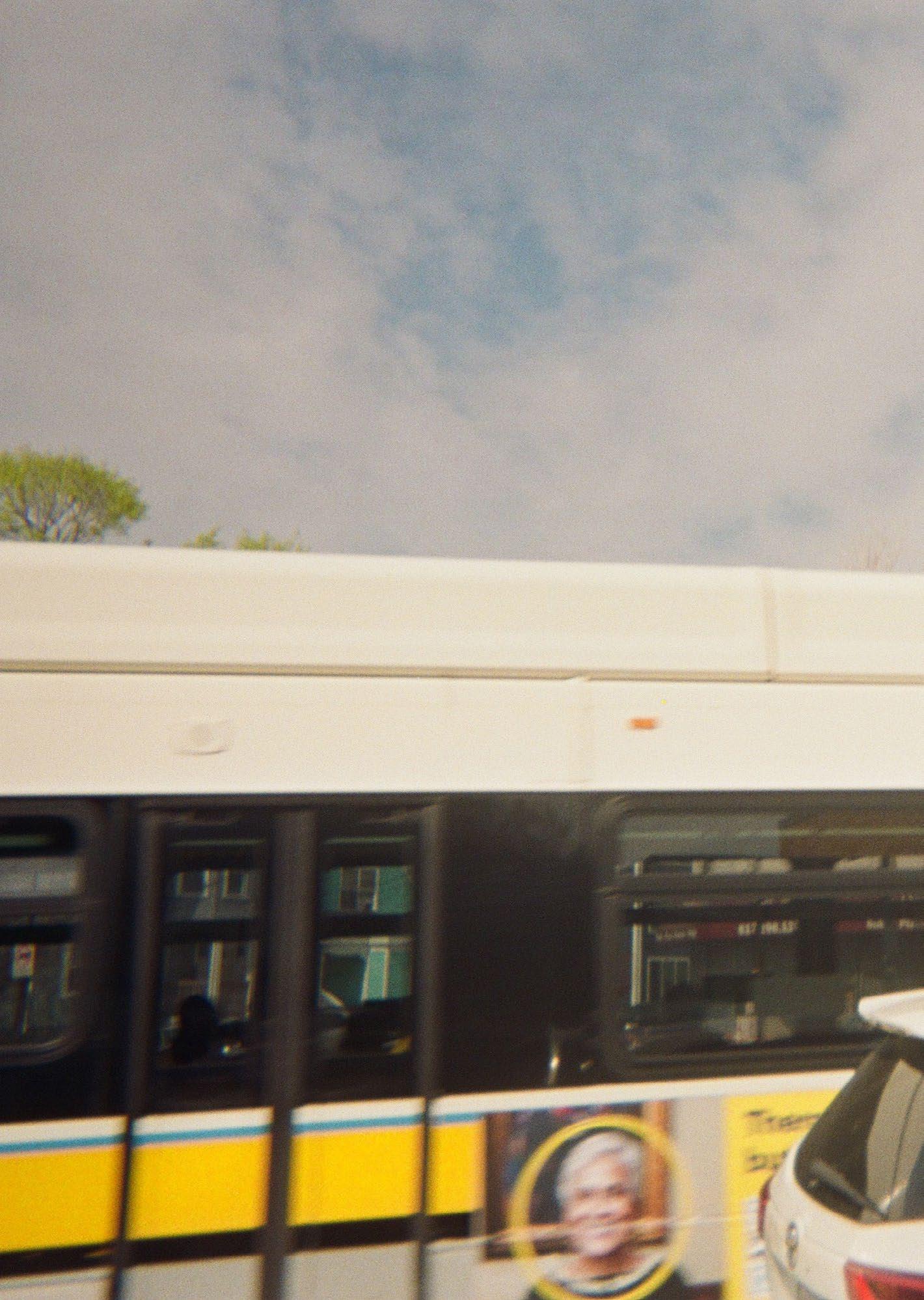

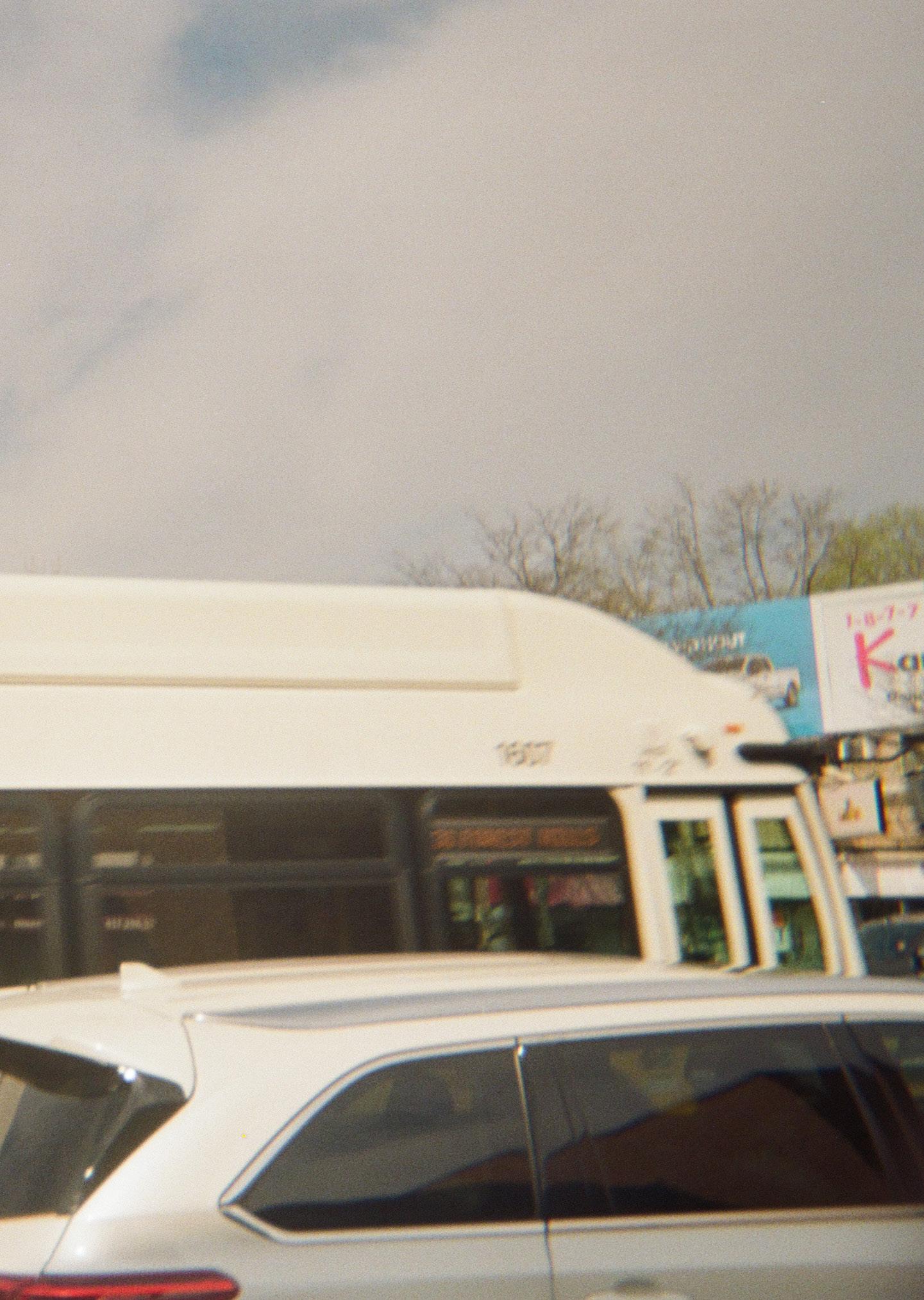

















































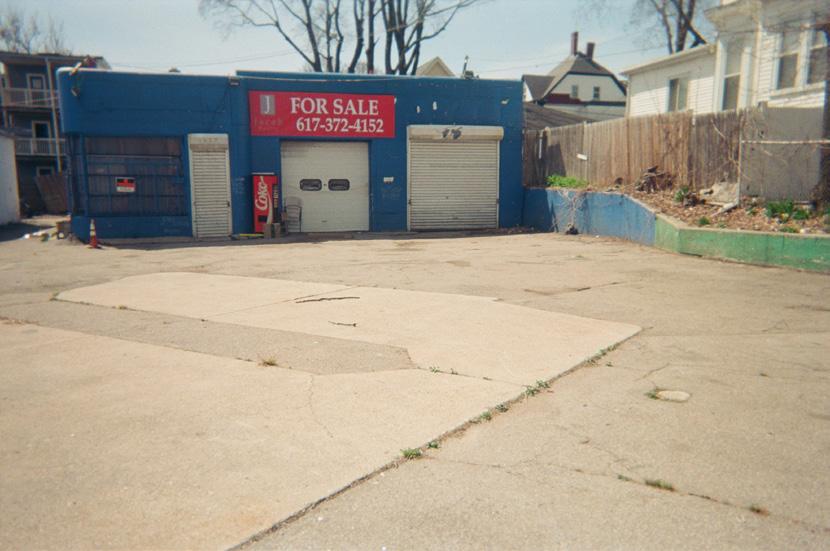



















































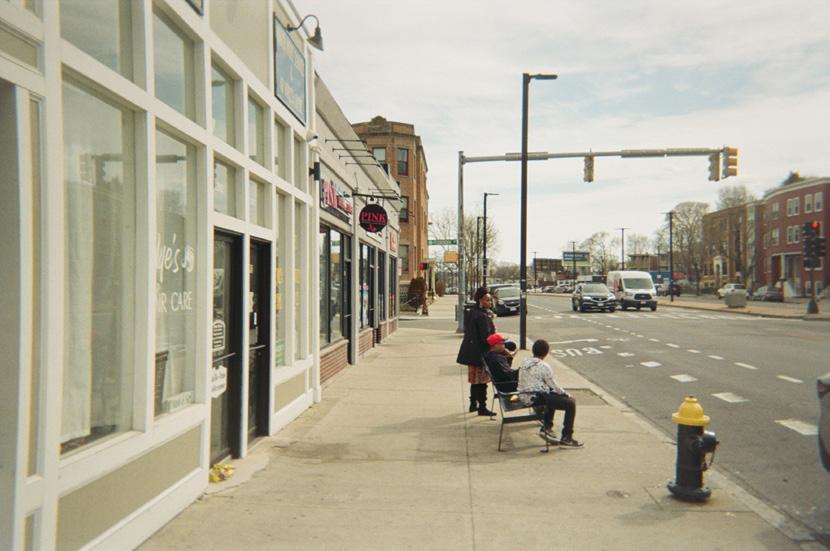


Marian












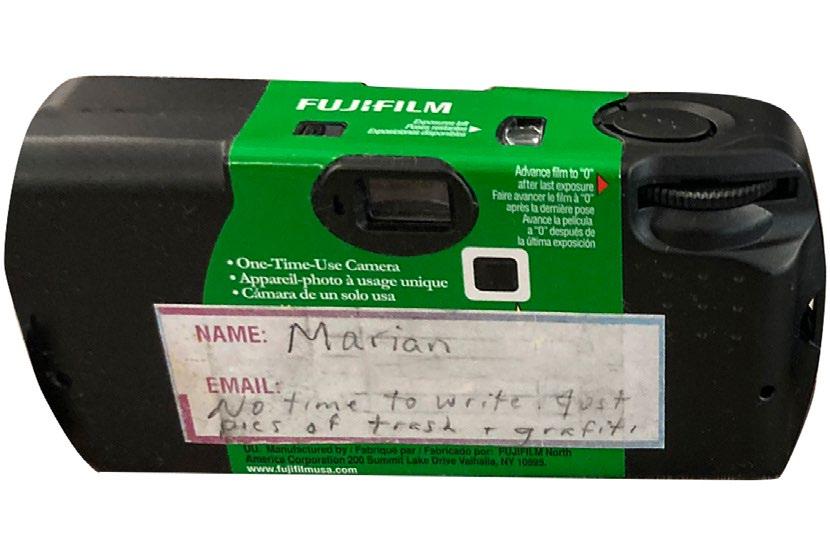


















Philmore








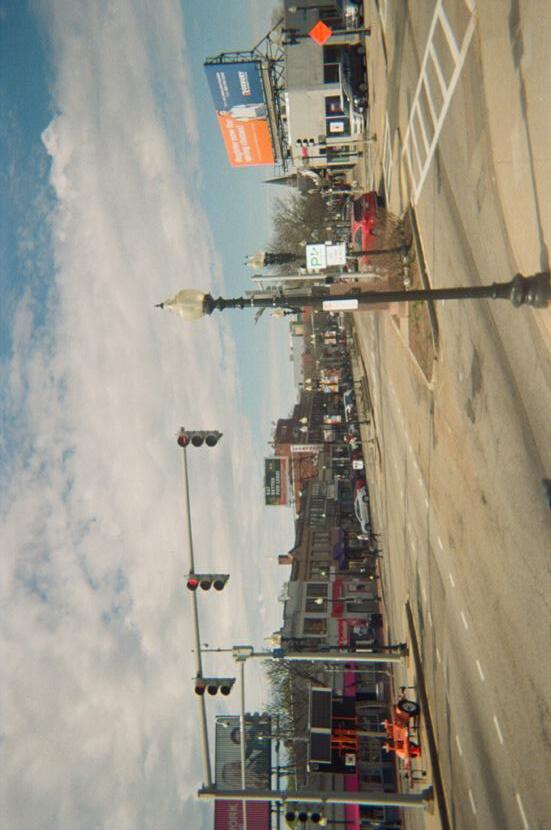











Fatima







Index










































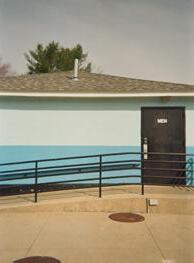




















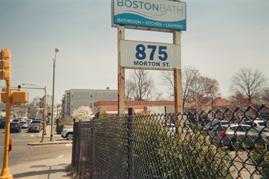



















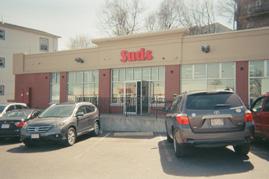























































CONCLUSION
The 14 weeks of the Open Project Revisiting Field Conditions at the Harvard Design School in the Spring of 2023, elapsed very quickly. As I reflect on everything my students and I have learned and encountered since January, I have to admit that our experience has been both very basic and full of surprises. In getting to know a “neighborhood,” we wanted to see if we could get a little closer to the “messiness and unpredictability” Stan Allen celebrates in field conditions. Key to that quest was talking to neighbors. In the context of a design school, and in the defense of a profession that purports to serve people, how does one come to know what exactly people want and need? Our Open Project would recommend walking.
Mattapan became an excuse for multiple visits and frequent encounters. I chose it because it has not yet gone through an overt gentrification process and conserves most of the character and dynamics its neighbors have created over time. Unbeknownst to us, we stumbled into a community that had been undergoing “community engagement” processes with the City of Boston since October 2018 and had just received a draft submission of a document titled “Plan Mattapan’’ in October 2022. Recent changes in the neighborhood, including increased densification, higher property values and rising rent, set neighbors into an acute tension, which they clearly express in every interaction with local government.
In contrast to the sense of constraint and even oppression this planning process evokes in neighbors, casual conversations with them quickly revealed a great deal of inventiveness and an expectant engagement with site and place. As we made friends and listened to people, we started to tune into latent projects. Melissa recently opened Mello Vibes, a Jamaican bar and restaurant just next to the Macumba Latina on River Street and across from the recently opened Loop at Mattapan Station, the newest development in the neighborhood. Having studied some architecture, she has envisioned how to take advantage of an adjacent remnant space currently used to place waste dumps. CJ Valerus, a local artist who was born and raised in Mattapan, is also a chef and a farmer. He has imagined the pockets of reserved forests such as Gladeside I and Matthunt Woods IV that are tucked away behind houses and traversed with wood chip paths, to cultivate edible wild mushrooms that could be collected and sold on the market. The more we talk to people, the more we become privy to ideas that could be facilitated. Bringing a waste service provider and neighbors together to negotiate where bins are stored, or defining precise collection times could be a game changer in the success of a local restaurant. Likewise, talking to neighbors and getting the park service to entertain a productive wild farming activity could create new revenue for a local youth group or neighborhood association. Neighbors tend to have very good ideas. These ideas just need acknowledgement, permission,
encouragement, and support to become realities. These are ideas that are unique to a place, that feed its richness and unpredictability, that accentuate the diversity of a city’s neighborhoods.
“Plan Mattapan” was ratified over a Zoom call on the evening of Wednesday April 26, 2023. While it would be ludicrous to deny the pressing need for what is in one way or another being addressed or promised in this plan – affordable housing, support for local businesses and current home-owning residents so that they can stay in their neighborhood, and improvements in mobility and accessibility – there is also something eerily foreign and formulaic about the recommendations presented. Abstract terms such as nodes, corridors and the 15-minute city may offer good intentions, but are also condoning zoning changes and prioritizing investments. Proposed changes designed into the public transportation system seem more a pitch to take advantage of available federal funds, than a response to the concerns of neighbors. Could four years of community engagements, in-person and Zoom-meetings, and prepared documents build and contribute to neighborhood dynamics that already exist and have been formed through the independent effort of its inhabitants? Their varied and creative forms of resilience could very well be celebrated and allowed to coexist rather than being herded into the homogenous
aesthetic and financial formulas practiced elsewhere.
Mattapan is an arrival city and not just another neighborhood in Boston that could use some embellishment. It is a place defined by global economic and social functions connected to Haiti, Jamaica, Montserrat, Cape Verde, Vietnam and Nigeria perhaps more so than the city in which it is inscribed. To Boston it is largely an invisible neighborhood, except for the fact that it houses a crucial labor force, without which the city could hardly function. But beyond the financial transactions of wages and remittances, the coexistence of folks from so many places has created a welcoming place of comfort and solidarity. Mattapan welcomes many, and has welcomed us. And so, no wonder its new migrants and eventual citizens would like to stay put: it’s a great place to call home.
As neighbors worry whether they will be able to continue living at “home,” they perceive an insurmountable distance and even bewilderment with respect to the transformation processes prescribed in the City’s planning efforts. Far from alleviating accumulated anxieties, “outreach” efforts imagine themselves as places to elucidate people on how development and affordable projects work, or how they are designed, as if lessons on real estate dynamics or how to arrange cube buildings on a block could actually dissipate the fear of an imminent $100 or $200 hike in the
cost of rent. And yet, Mattapan´s neighbors – immigrants themselves or their descendants – are very resourceful and hard working. They have developed a keen ability to detect opportunities in overlooked places, that is learned through the hard practice of survival in unpredictable contexts. The trouble is that the institutional frames we have for neighborhood transformations operate at the larger scale of city planning or that of advocacy through neighborhood associations such as the Greater Mattapan Neighborhood Council, while none exist to detect and seek out these smaller scales that are so valuable to neighborhood life.
I believe Boston could gain a great deal if it were to tune into and incorporate the knowledge of place defined and created by its own neighbors. Such creativity and resilience certainly has a lot to do with years of disinvestment and disinterest, but righting this neglect should also include acknowledging, celebrating and conserving their achievements through hard times. If “community engagement” could be conceived as a much more horizontal exchange where people´s projections were considered integral parts of a more holistic, nuanced, and rich understanding of place, ultimately we will not only set ourselves up nicely to preserve and celebrate diversity in our neighborhoods, we will also innovate more effective neighborhood development processes.
On-the ground interactions through personal encounters and active listening seem like a good place to start. Walking and talking could very effectively overcome and hopefully rid us altogether of the traces that still remain in the sweeping gestures of our modernist planning legacy.
Silva May 2023
Thank you,
Adam
Albert
Andre
Betty
Bobby
CJ
Claudia
Daniela
David
Denna
Dimitri
Engell
Eric
Eric J
Father Garcia
Father Jack
Fatima
George
Ioana
Jennifer
Jerard
Jerry
Joan
Jonathan
Jose
Joseph
Jorge
Judy
Kenya
Kim
Kywon
Leroy
Liza
Marcia
Marian
Markeece
Maurice
Max
Maxime
Melissa
Mike
Nataka
Ophir
Paul
Patricia
Philmore
Raymond
Stacy
Tony
Tulu
Vivian
Wes & Ricardo Baez
Lisa Blackmore
Cristina Díaz
Efren García
Justine Graham
Ines Zalduendo
Blue Hill Mountain
Restaurant
Boston Nature Center
Boston Development and Planning Authority
Clark-Cooper
Community Gardens ds4si
Fowler Clark Epstein
Farm
FUJIFILM
Gallivan Community Center
GMNC
Le Foyer Bakery
Mass Design Group
Mattapan Library
Mattapan Teen Center
Mello Vibez
Premier Fence
Toutwel
Treehouse Foundation
To all the kind, generous, and pleasant people in Mattapan who graciously shared their stories with us during our walks. To our brilliant classmates and our valued TA, Esesua, for helping us expand our perspectives and learn new ideas. To our instructor, Elisa, for introducing us to the walking method, which enabled us to have unfiltered discoveries in the neighborhood and listen to the deeply resonant voices of the community.



Forgotten Fort Kongestein Instructor
Elisa Silva
Teaching Fellow
Esesua Ikpefan Students
Alexandra Barnes, Stacey Berman, Maggie House, Inkoo Kang, Runke Luo, Marcel Merwin, Niko Tian, Jessica Walker, Cherry Wu, Jenny Yi.
Report Design & Editor Studio Contra
Dean and Josep Lluís Sert Professor of Architecture
Sarah Whiting Chair of the Department of Architecture
Mark Lee
Copyright © 2024 President and Fellows of Harvard College. All rights reserved. No part of this book may be reproduced in any form without prior written permission from the Harvard University Graduate School of Design.
Text and images © 2024 by their authors.
The editors have attempted to acknowledge all sources of images used and apologize for any errors or omissions.
Acknowledgments
Adam, Albert, Andre, Betty, Bobby, CJ, Claudia, Daniela, David, Denna, Dimitri, Engell, Eric, Eric J., Father Garcia, Father Jack, Fatima, George, Ioana, Jennifer, Jerard, Jerry, Joan, Jonathan, José, Joseph, Jorge, Judy, Kenya, Kim, Kywon, Leroy, Liza, Marcia, Marian, Markeece, Maurice, Max, Maxime, Melissa, Mike, Nataka, Ophir, Paul, Patricia, Philmore, Raymond, Stacy, Tony, Tulu, Vivian, Wes & Ricardo Baez, Lisa Blackmore, Cristina Díaz, Efrén García, Justine Graham, Inés Zalduendo, Blue Hill Mountain Restaurant, Boston Nature Center, Boston Development and Planning Authority, Clark-Cooper Community Gardens, ds4si, Fowler-Clark Epstein Farm, FUJIFILM, Gallivan Community Center, GMNC, Le Foyer Bakery, Mass Design Group, Mattapan Library, Mattapan Teen Center, Mello Vibez, Premier Fence, Toutwel, Treehouse Foundation.
Image Credits
All images belong to the students of Revisiting Field Conditions
Harvard University Graduate School of Design 48 Quincy Street Cambridge, MA 02138
gsd.harvard.edu
